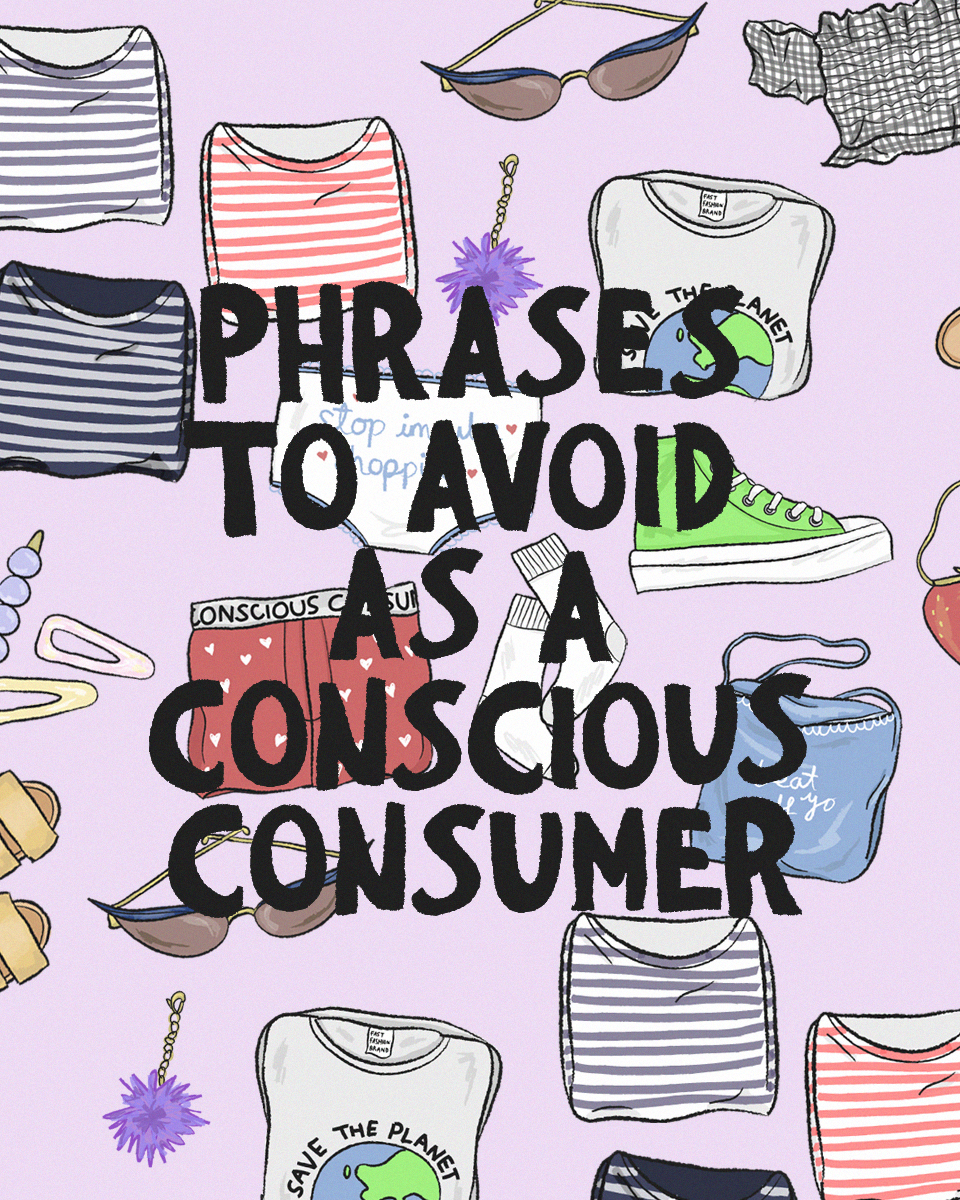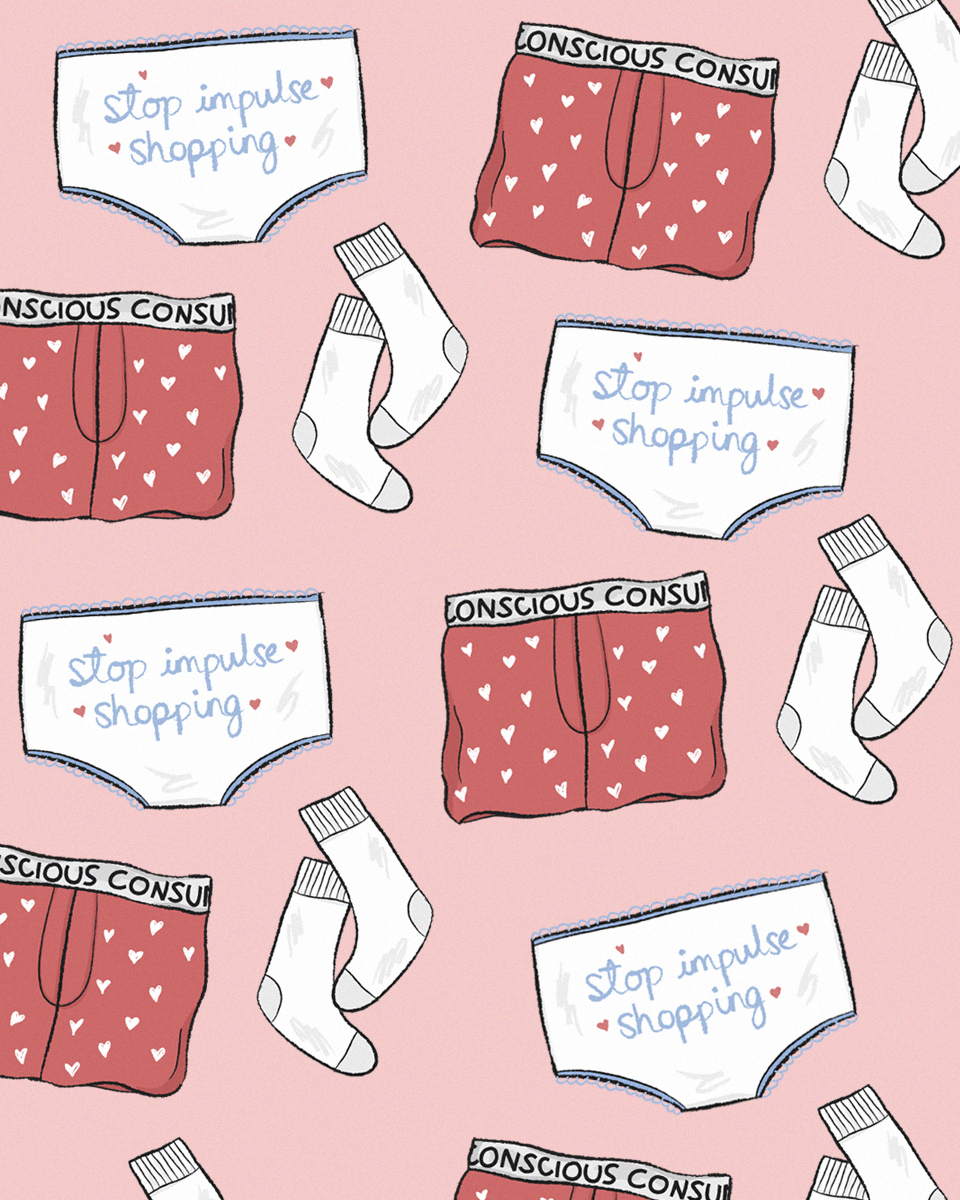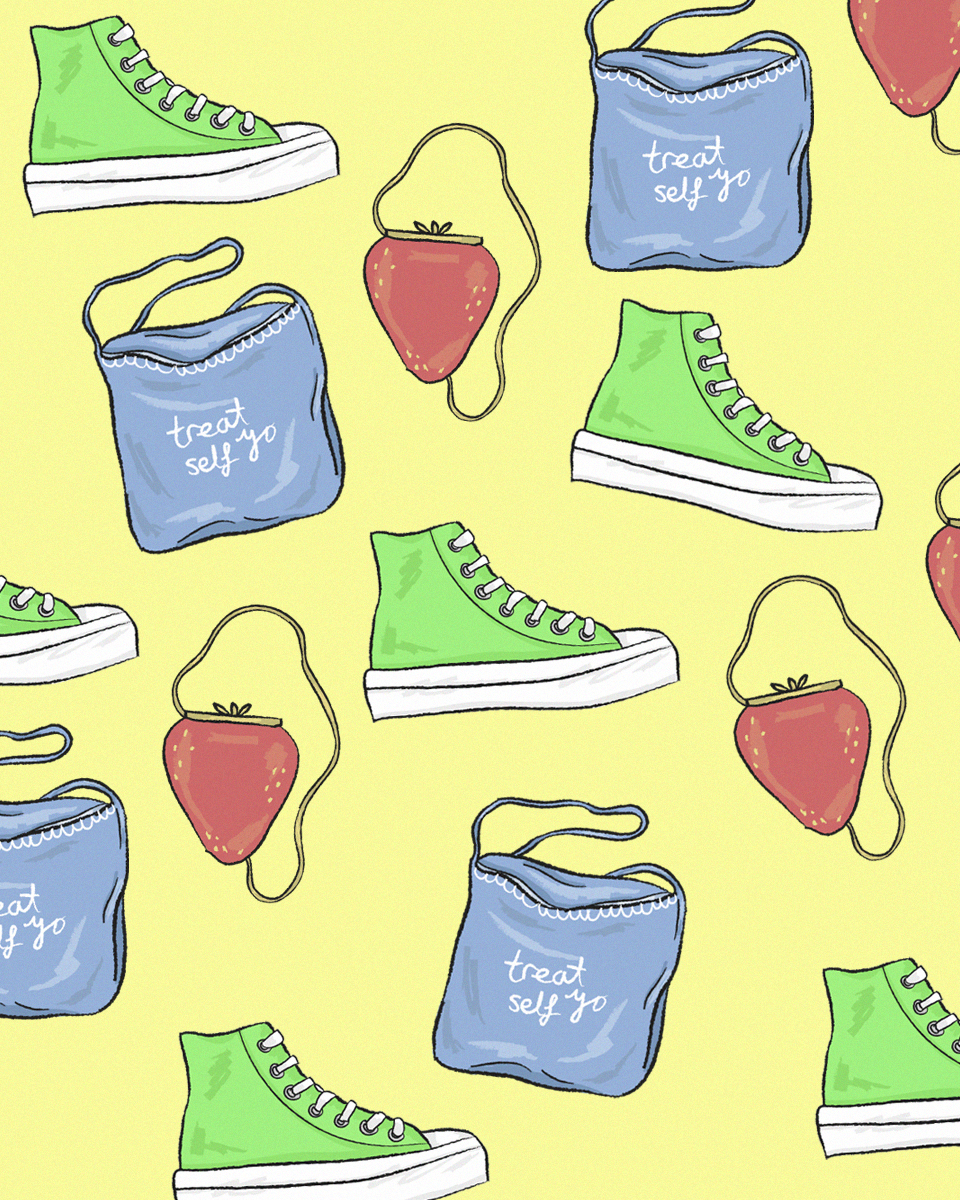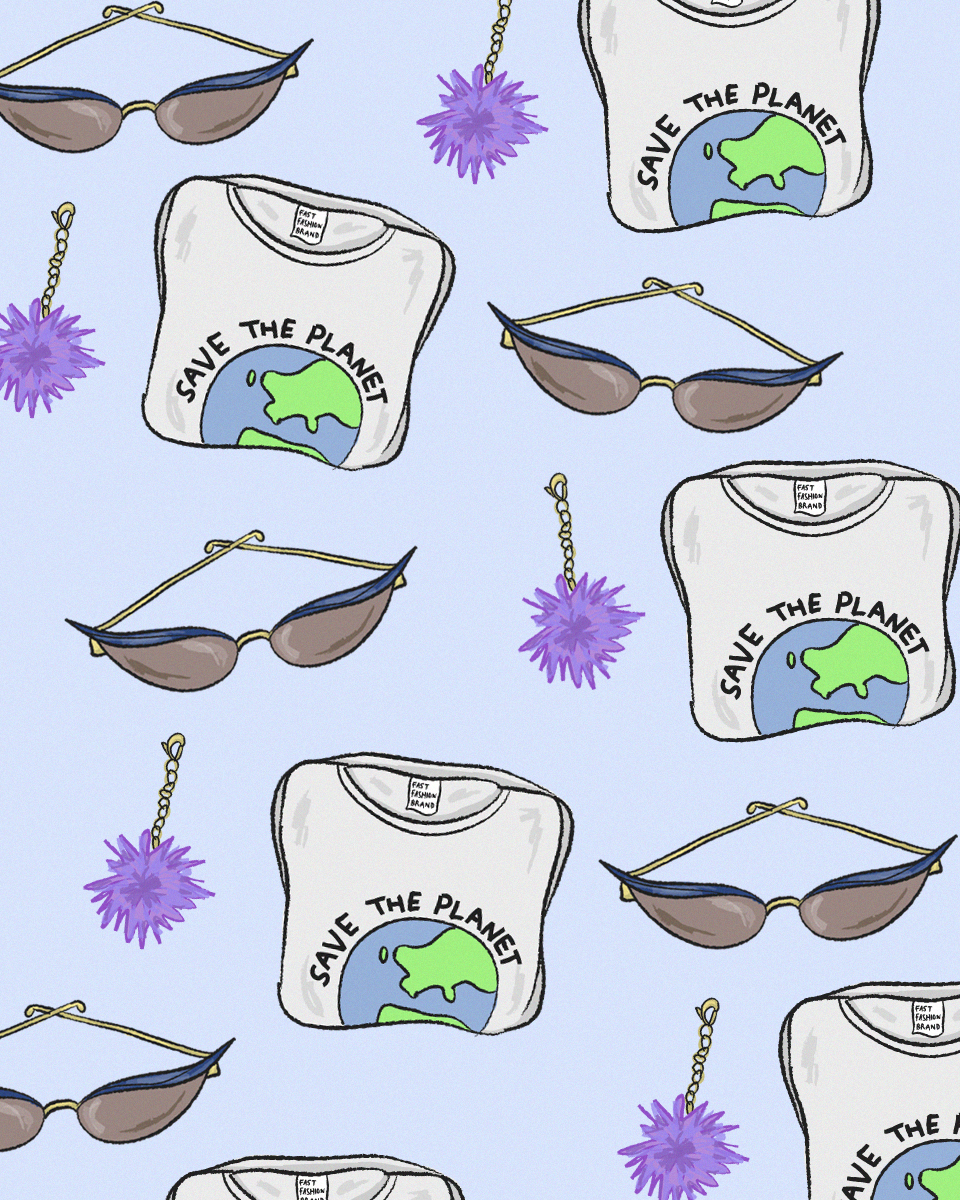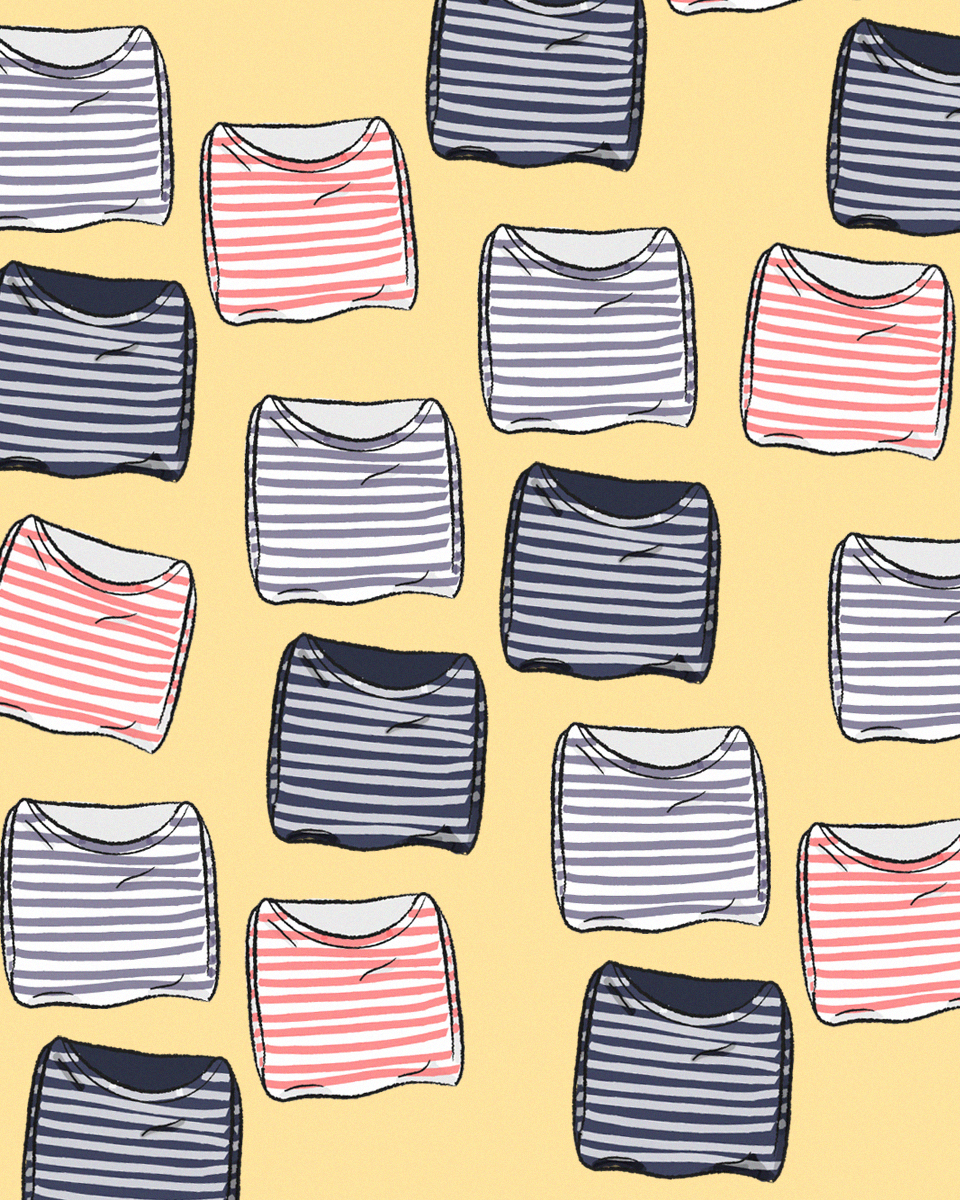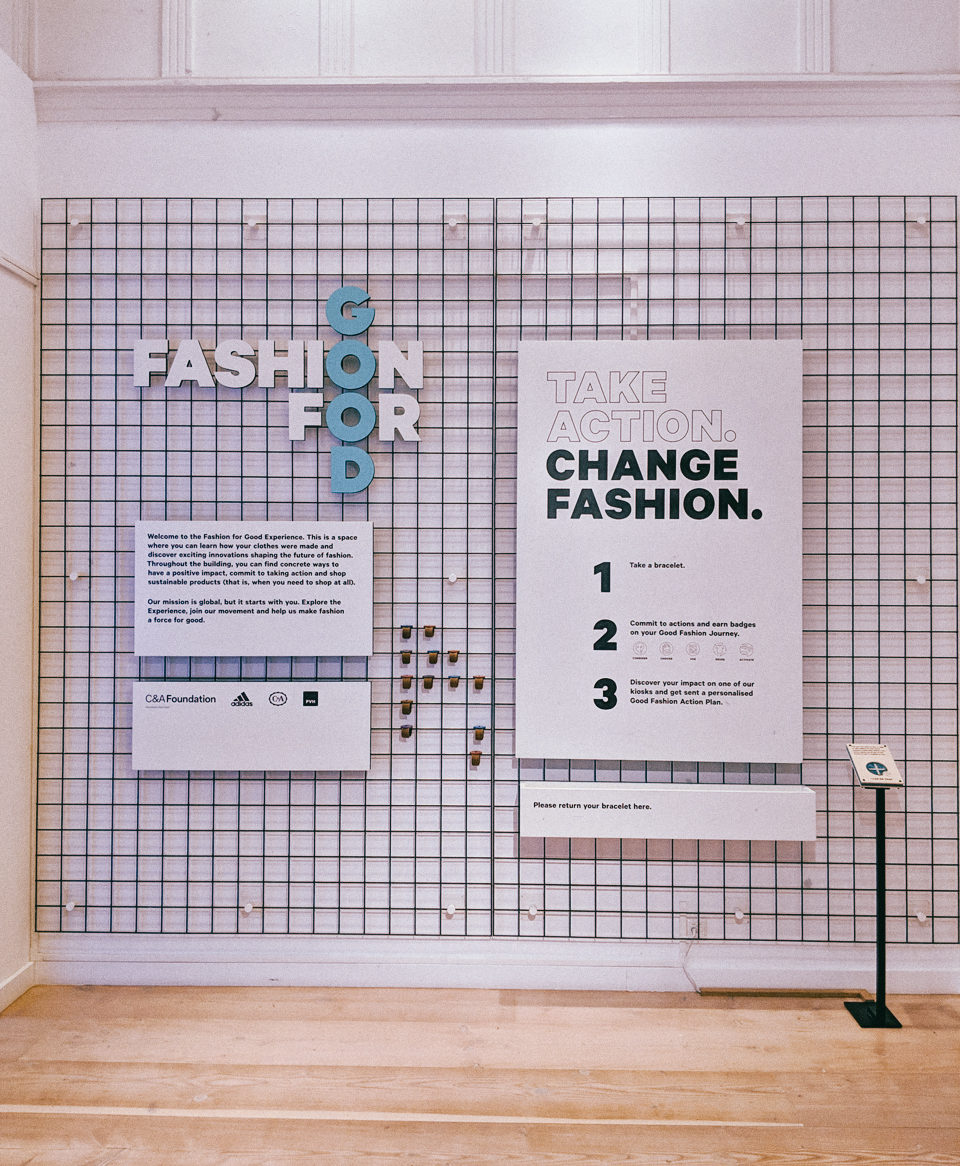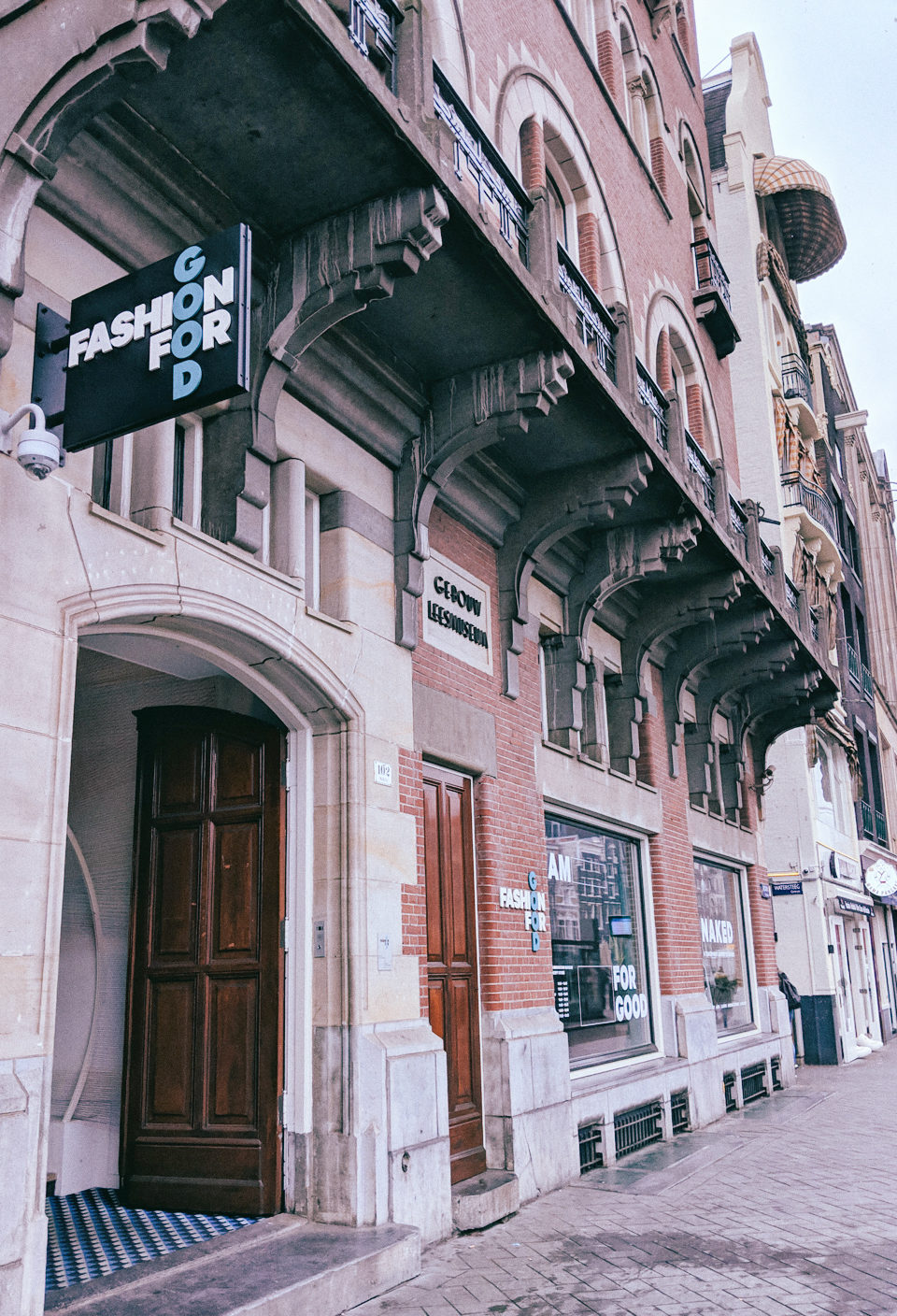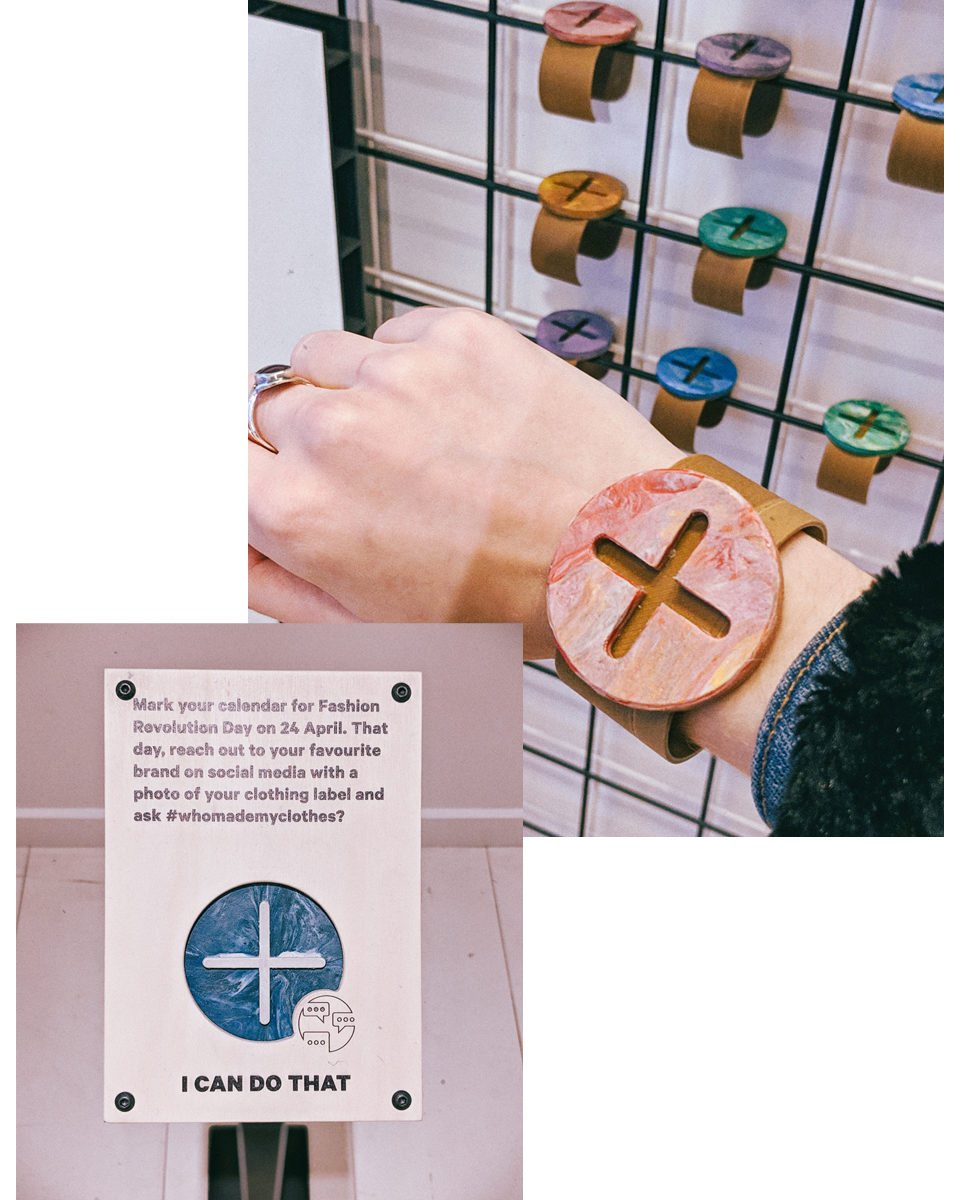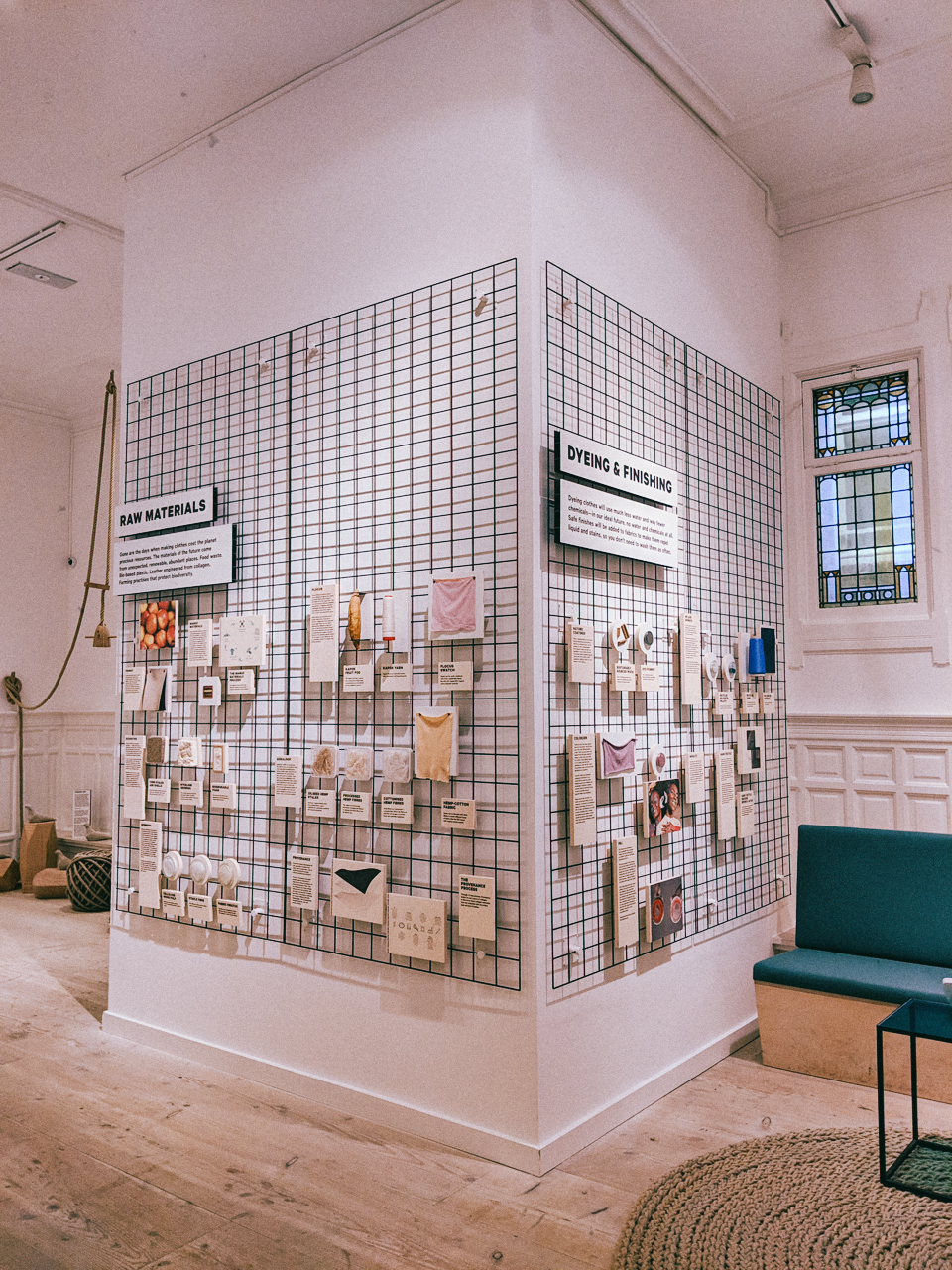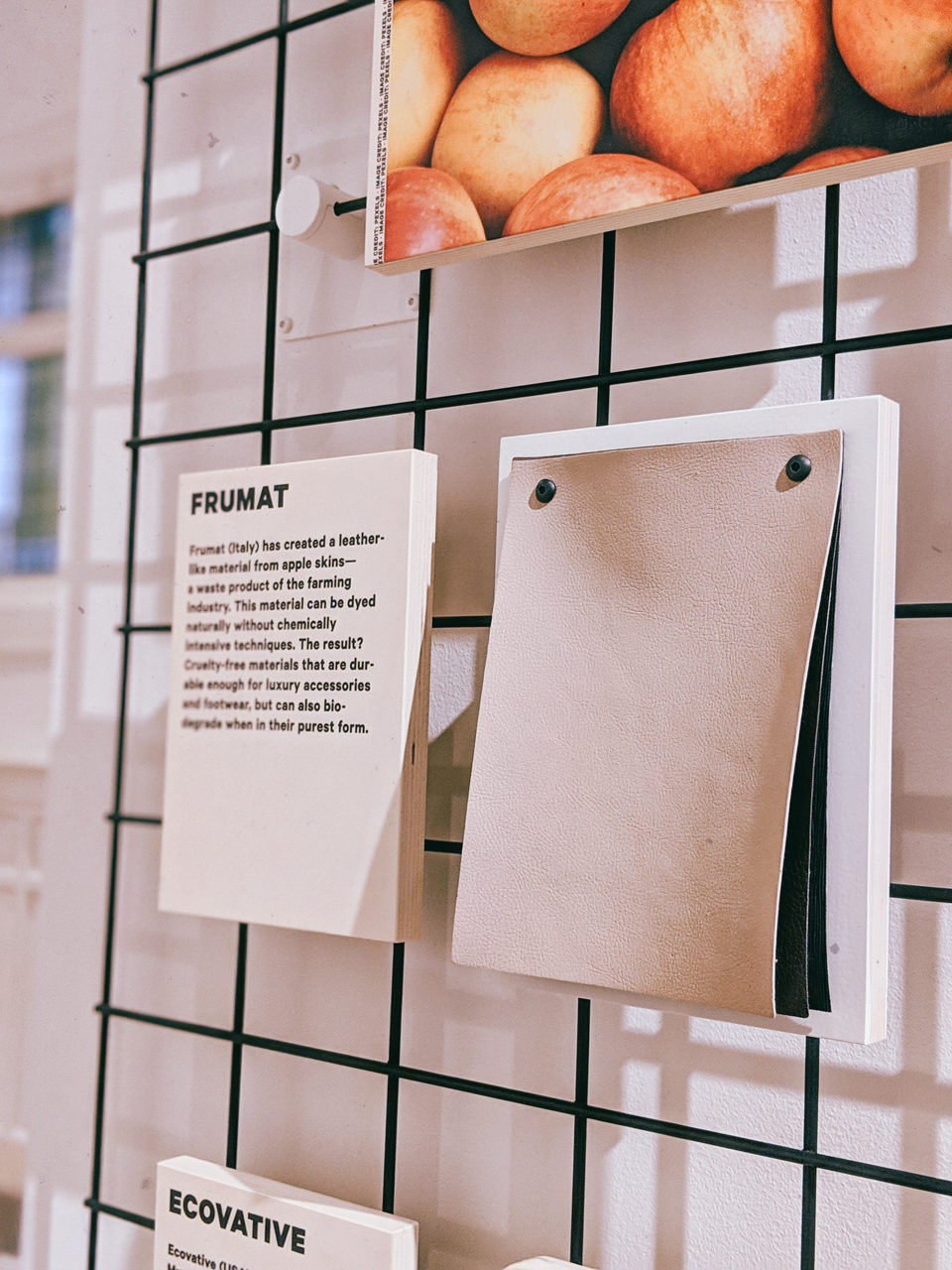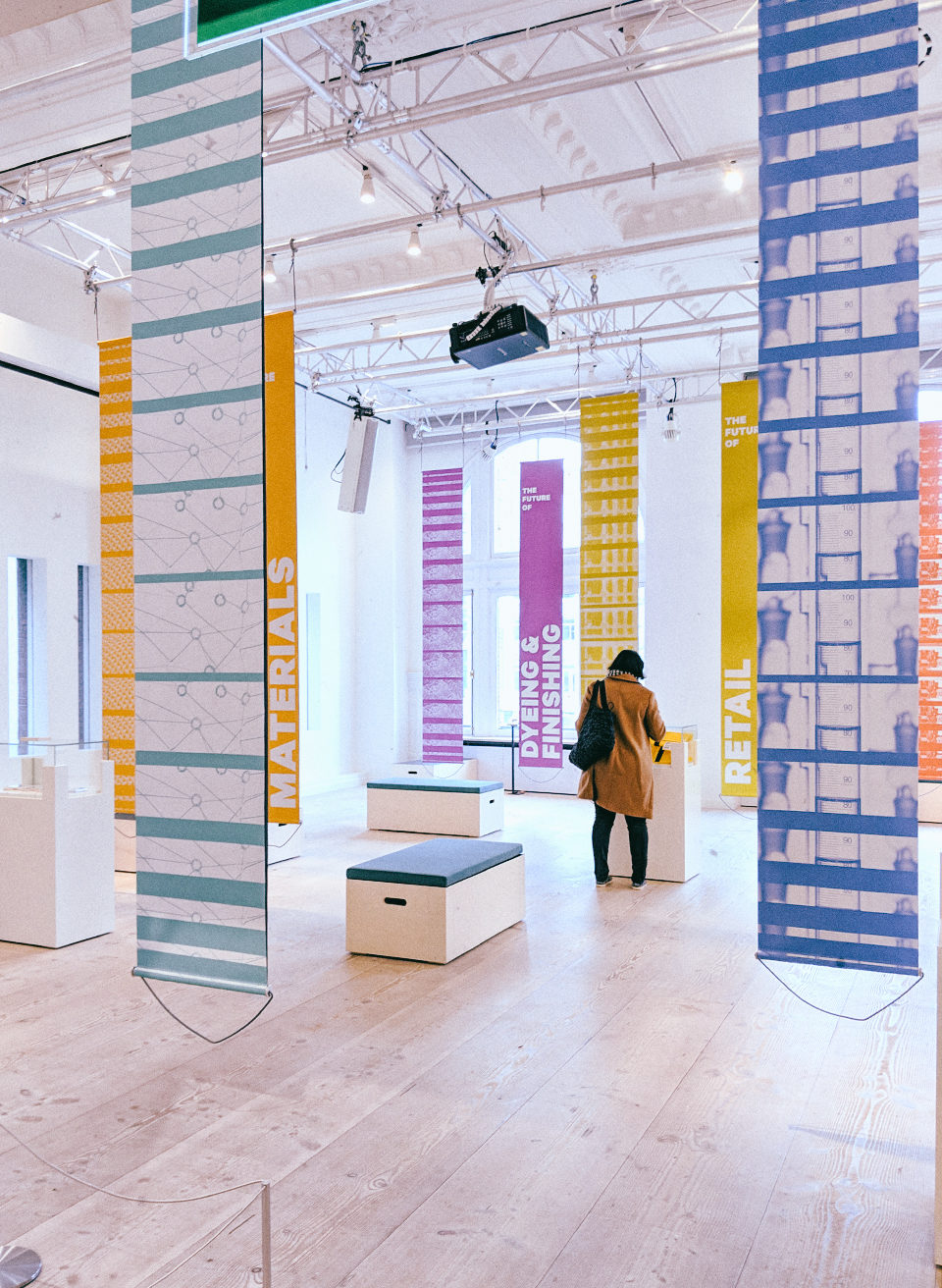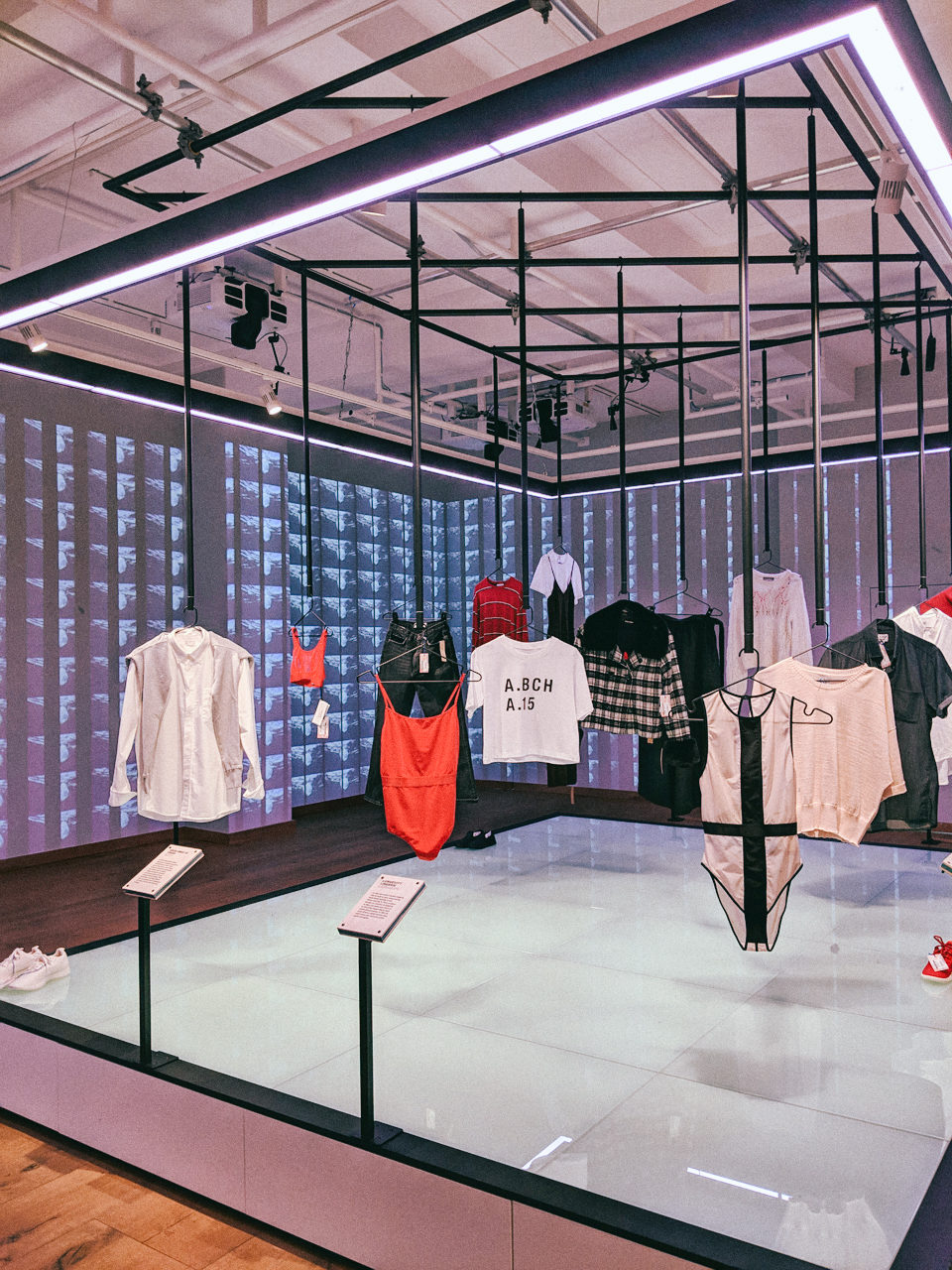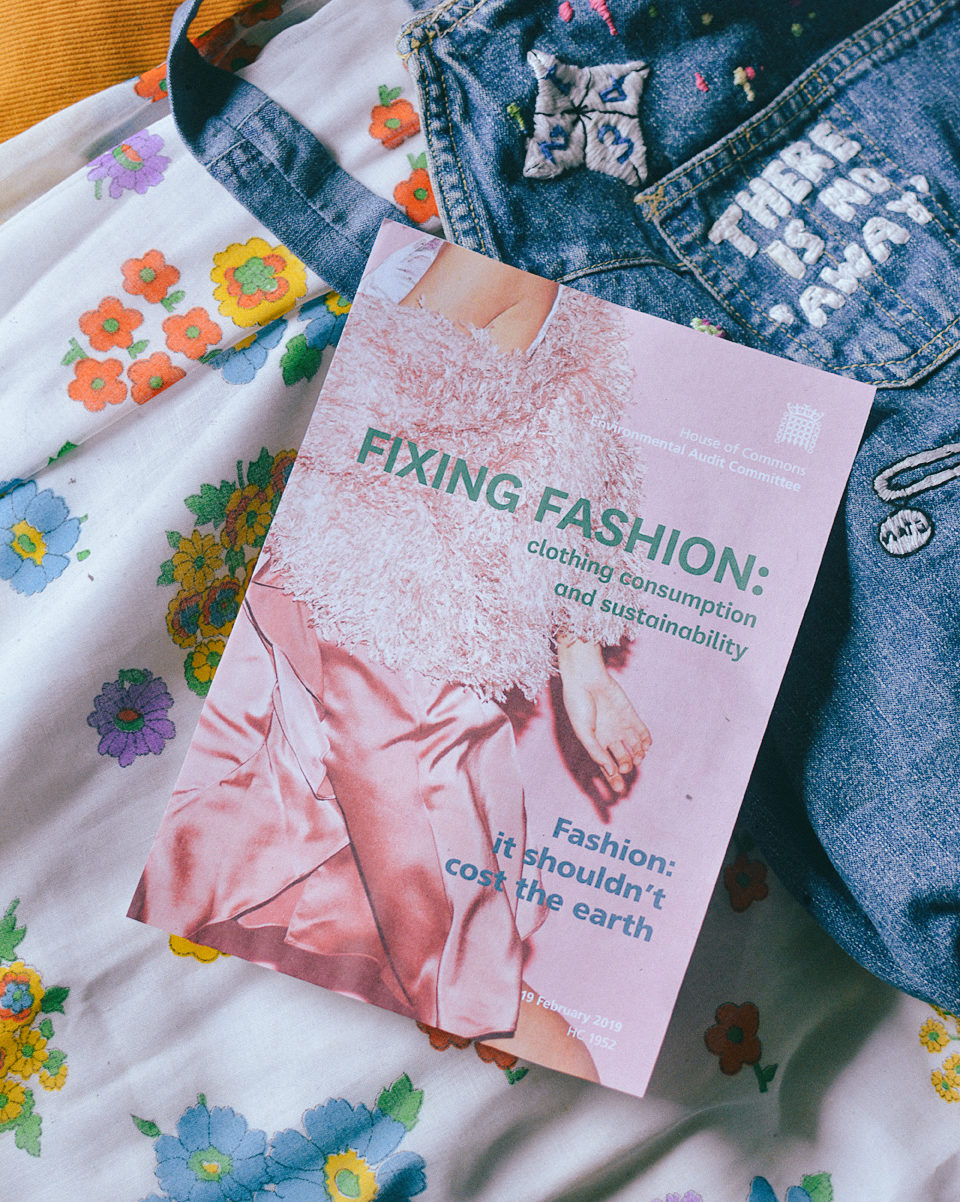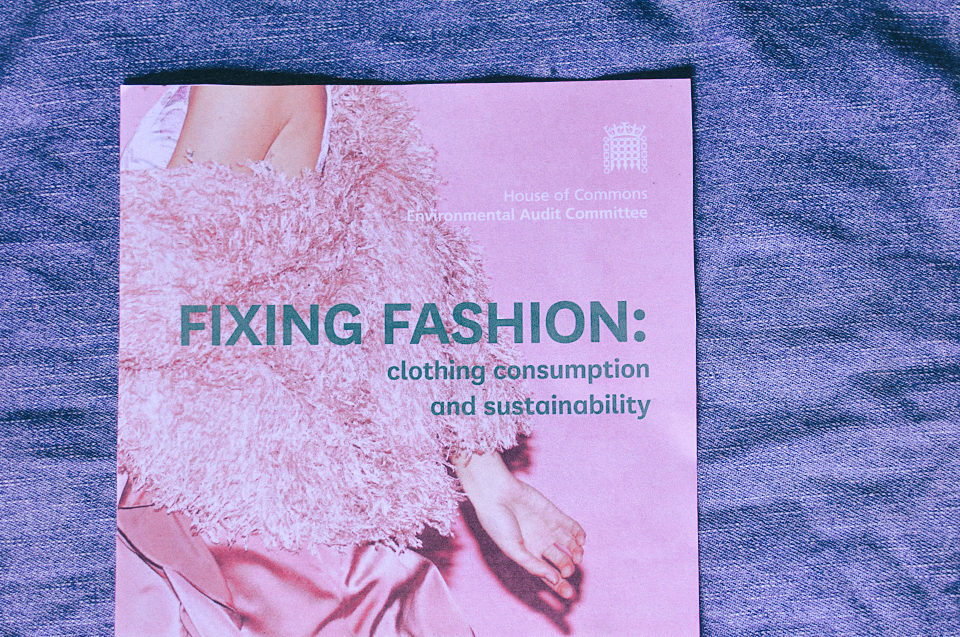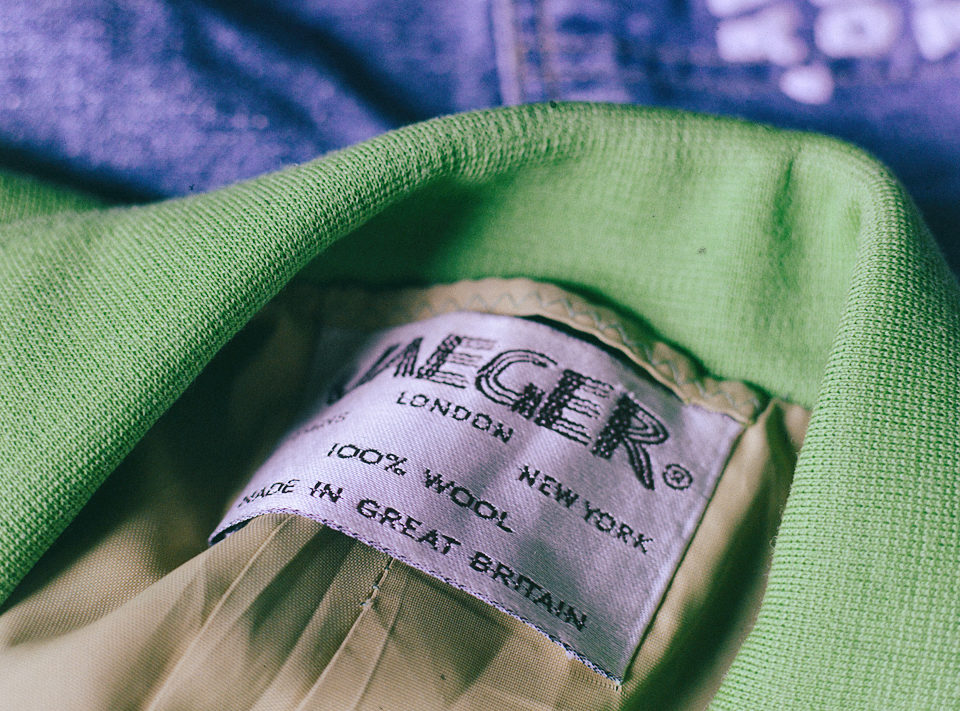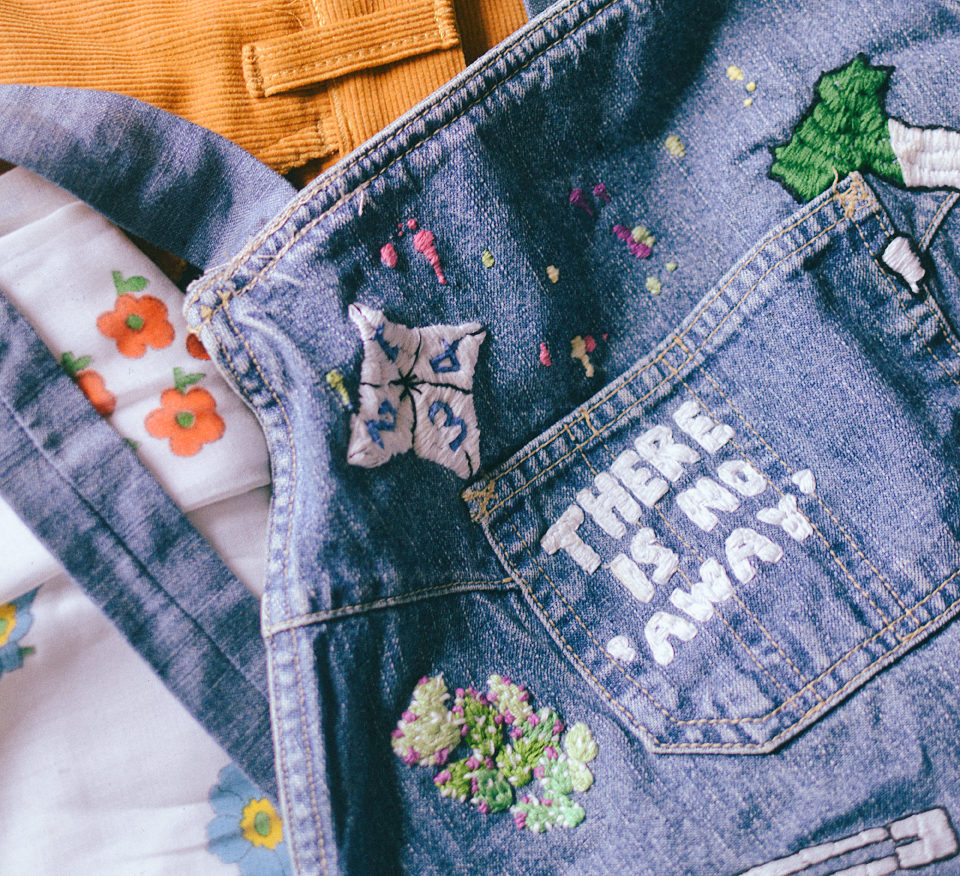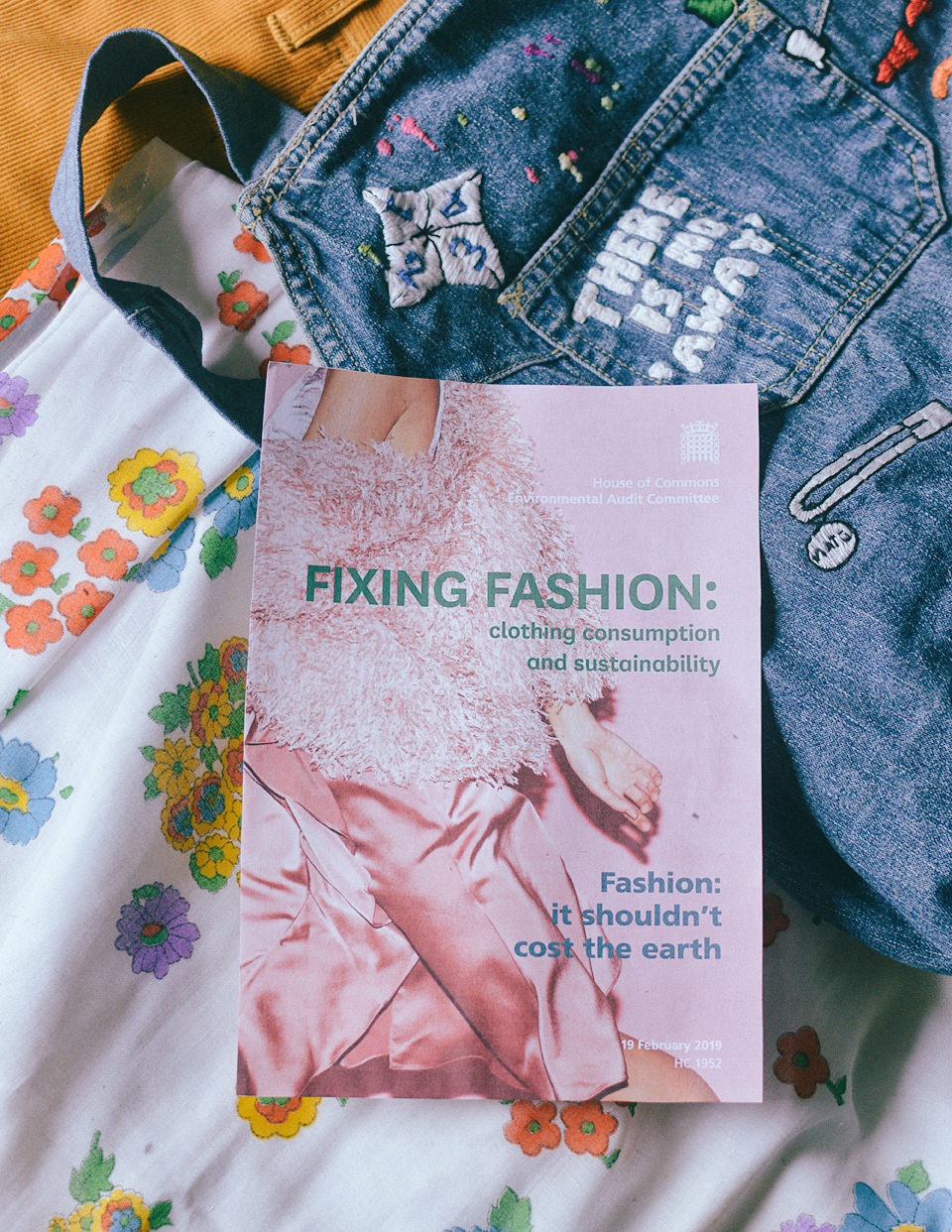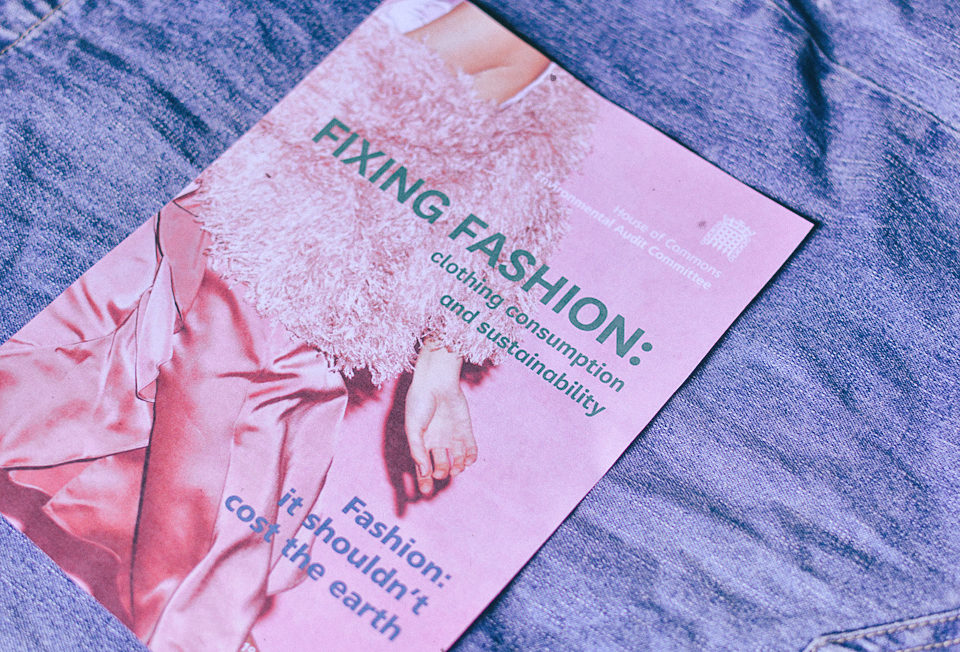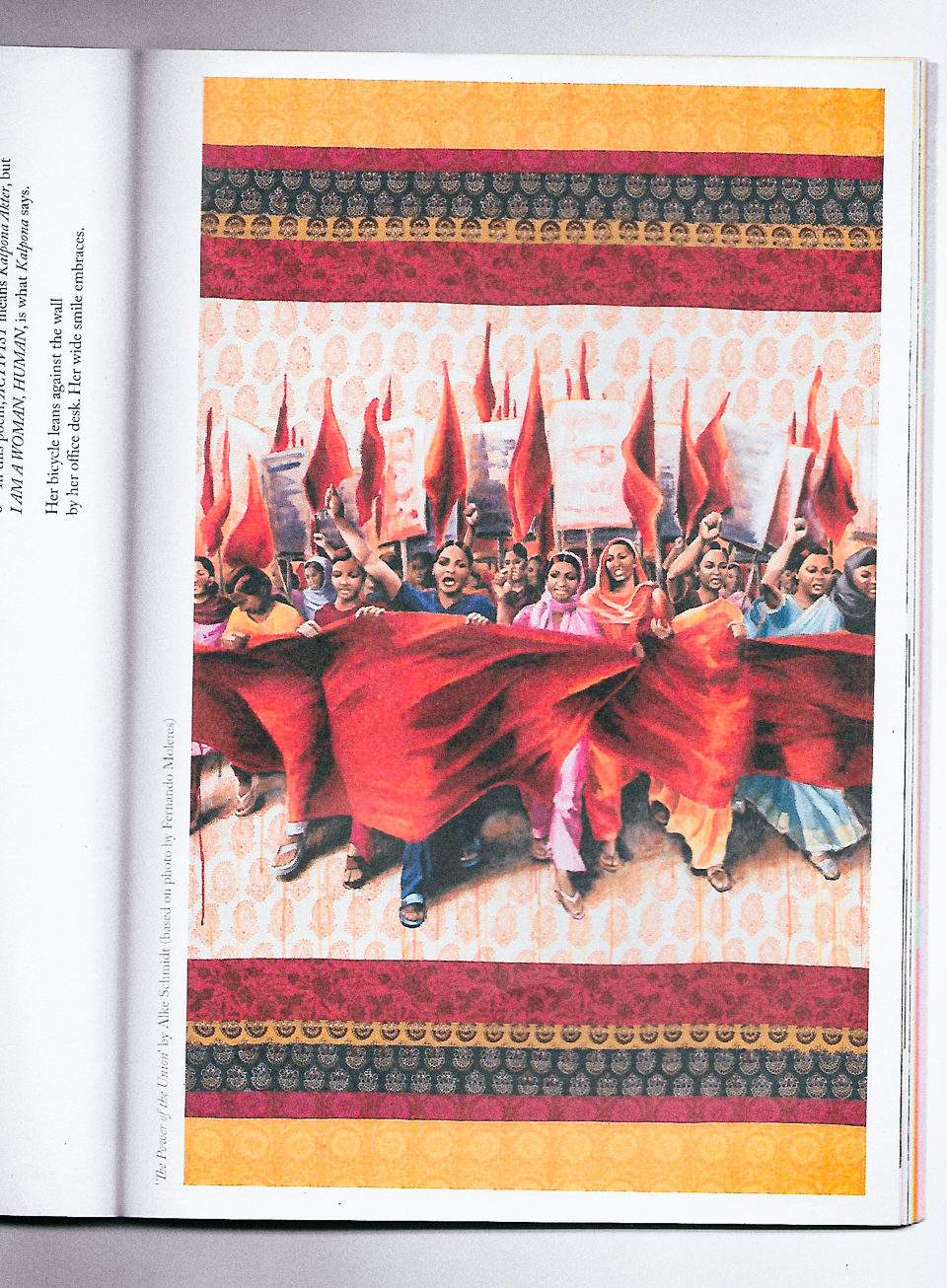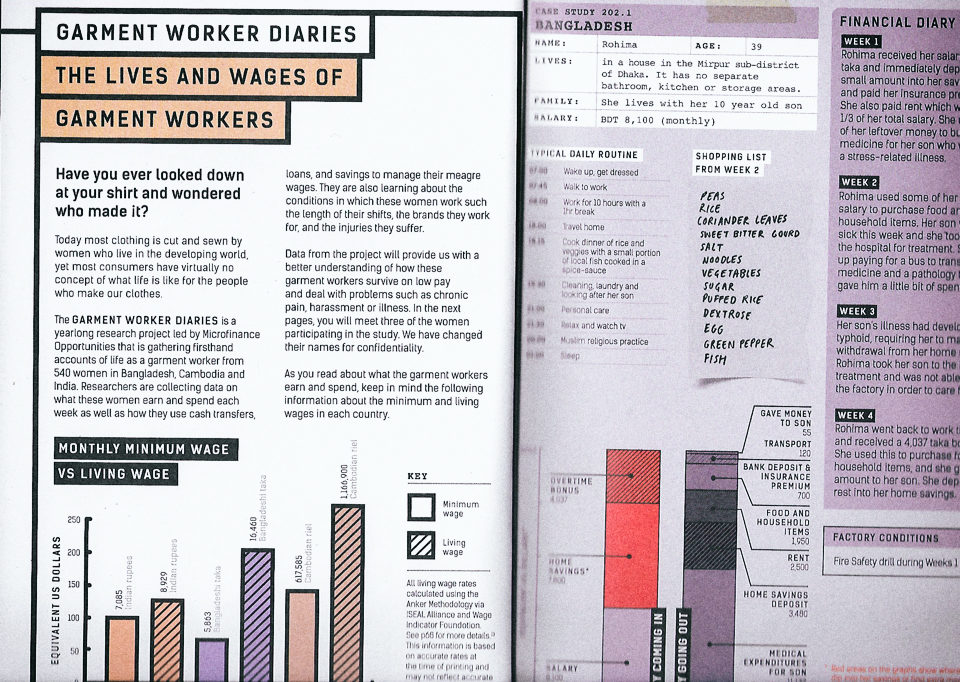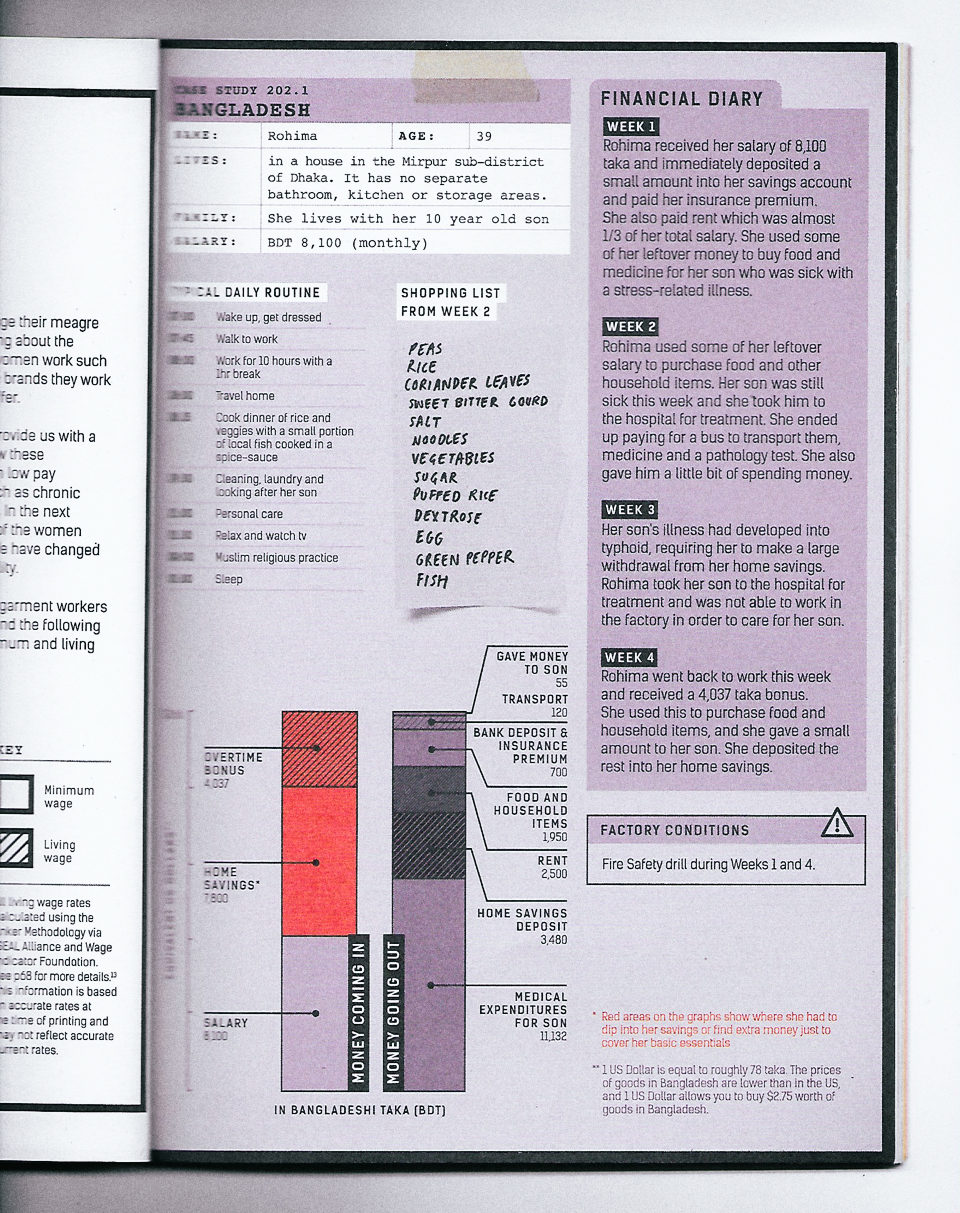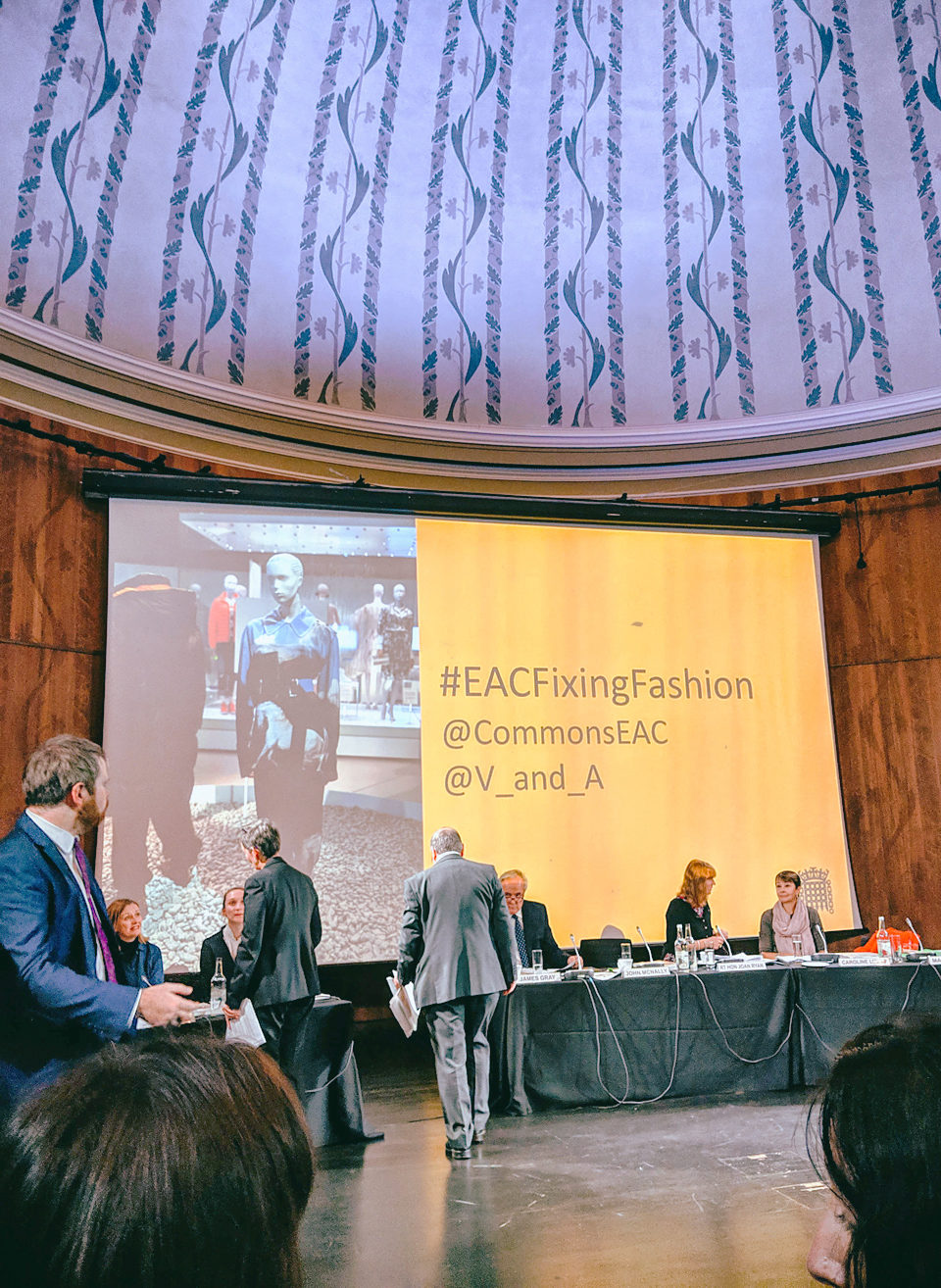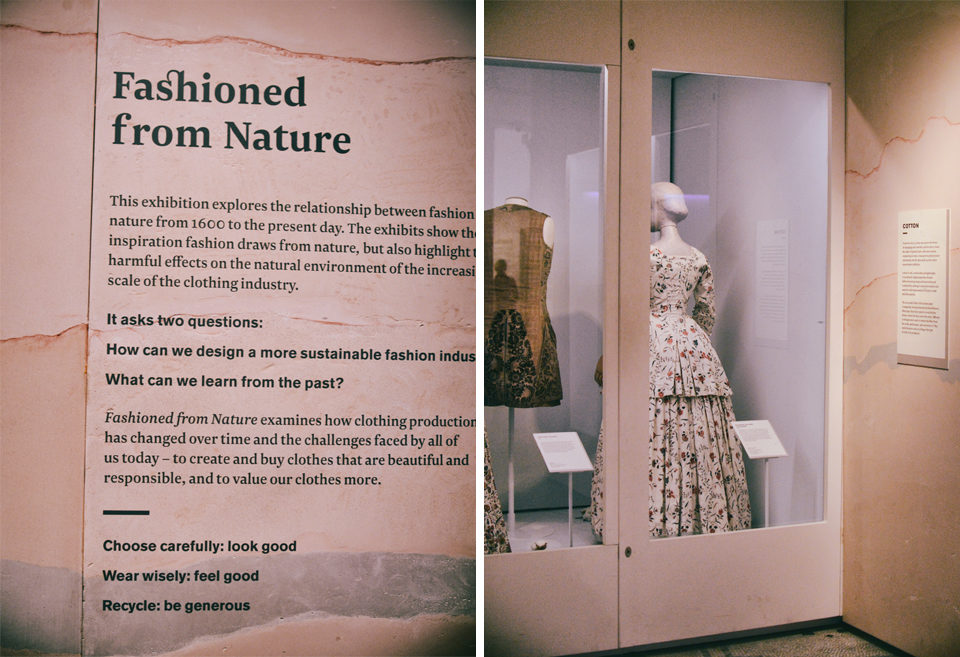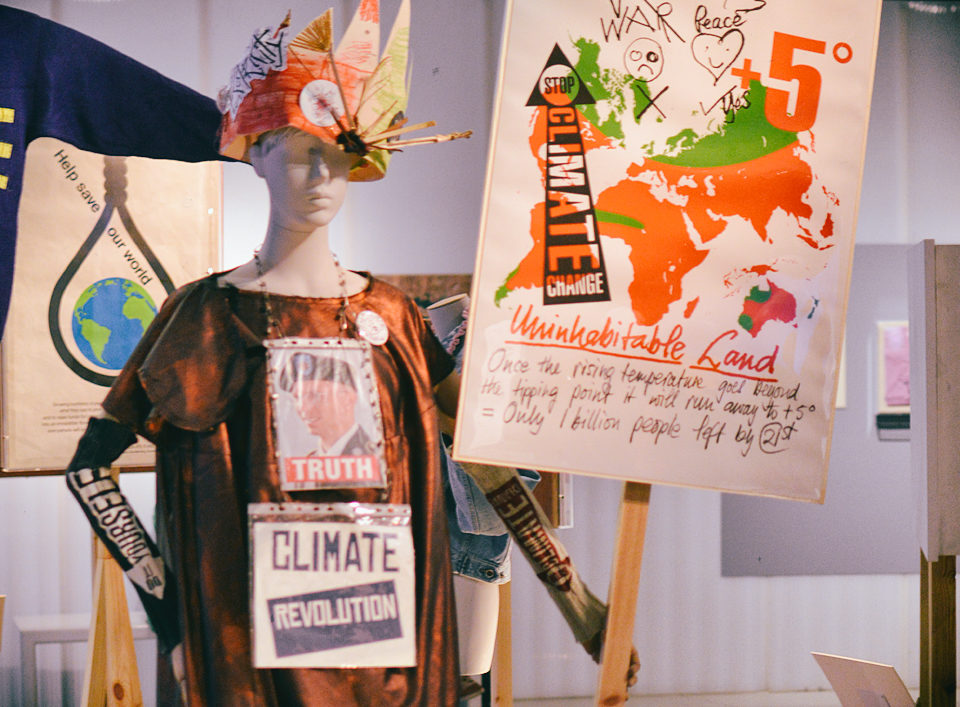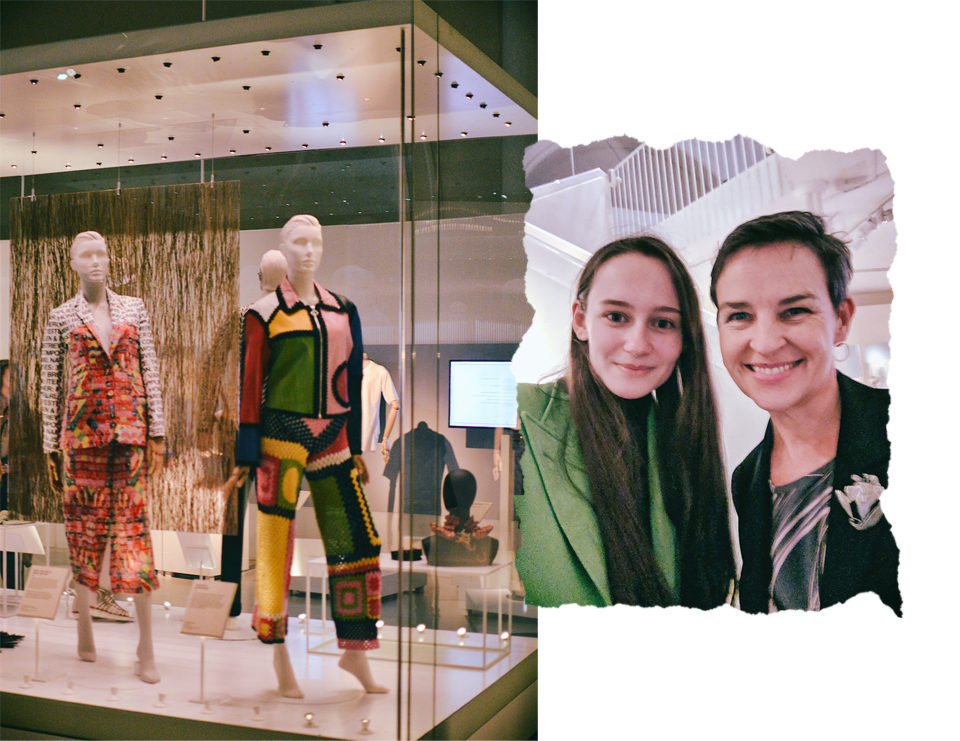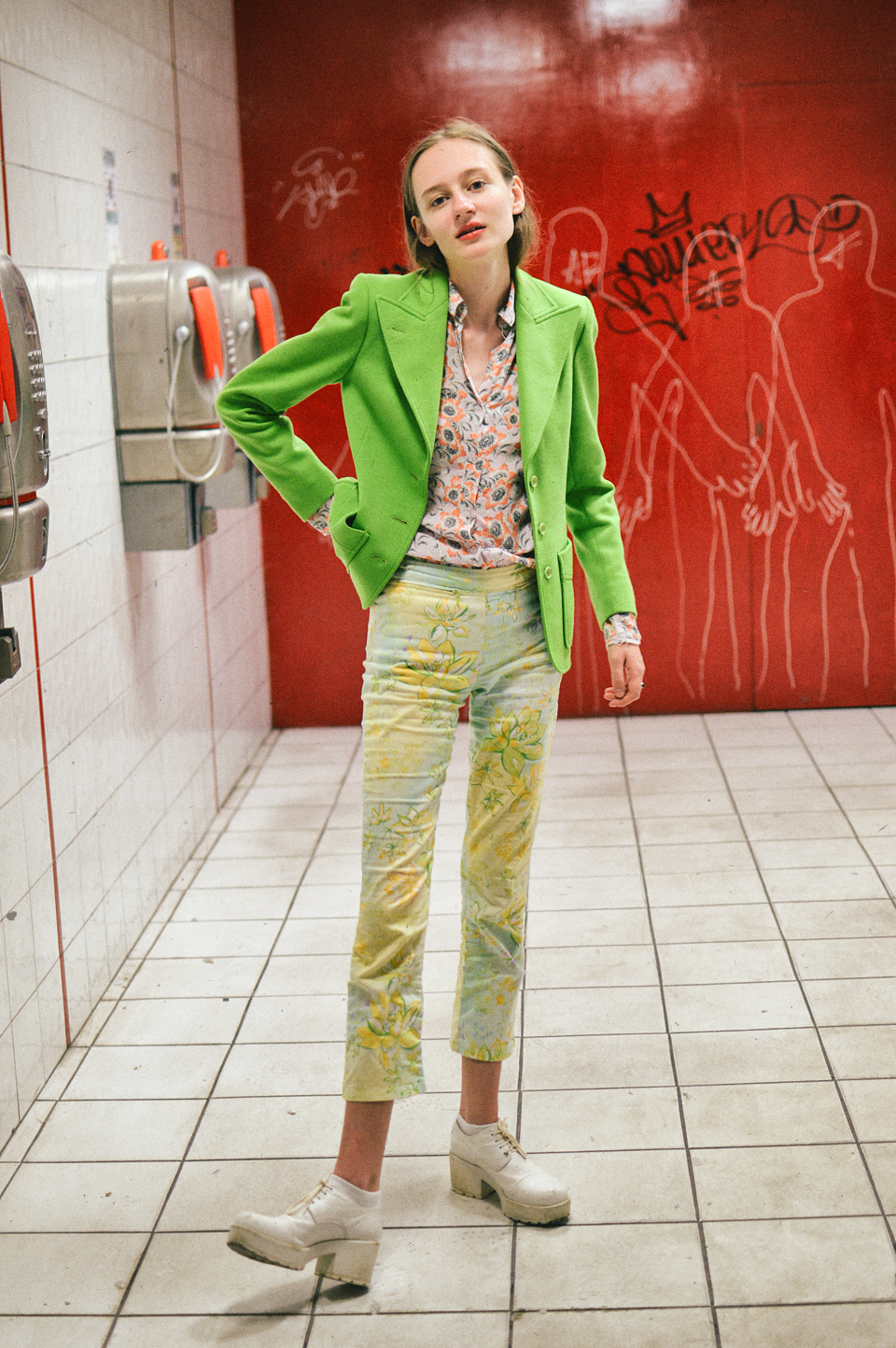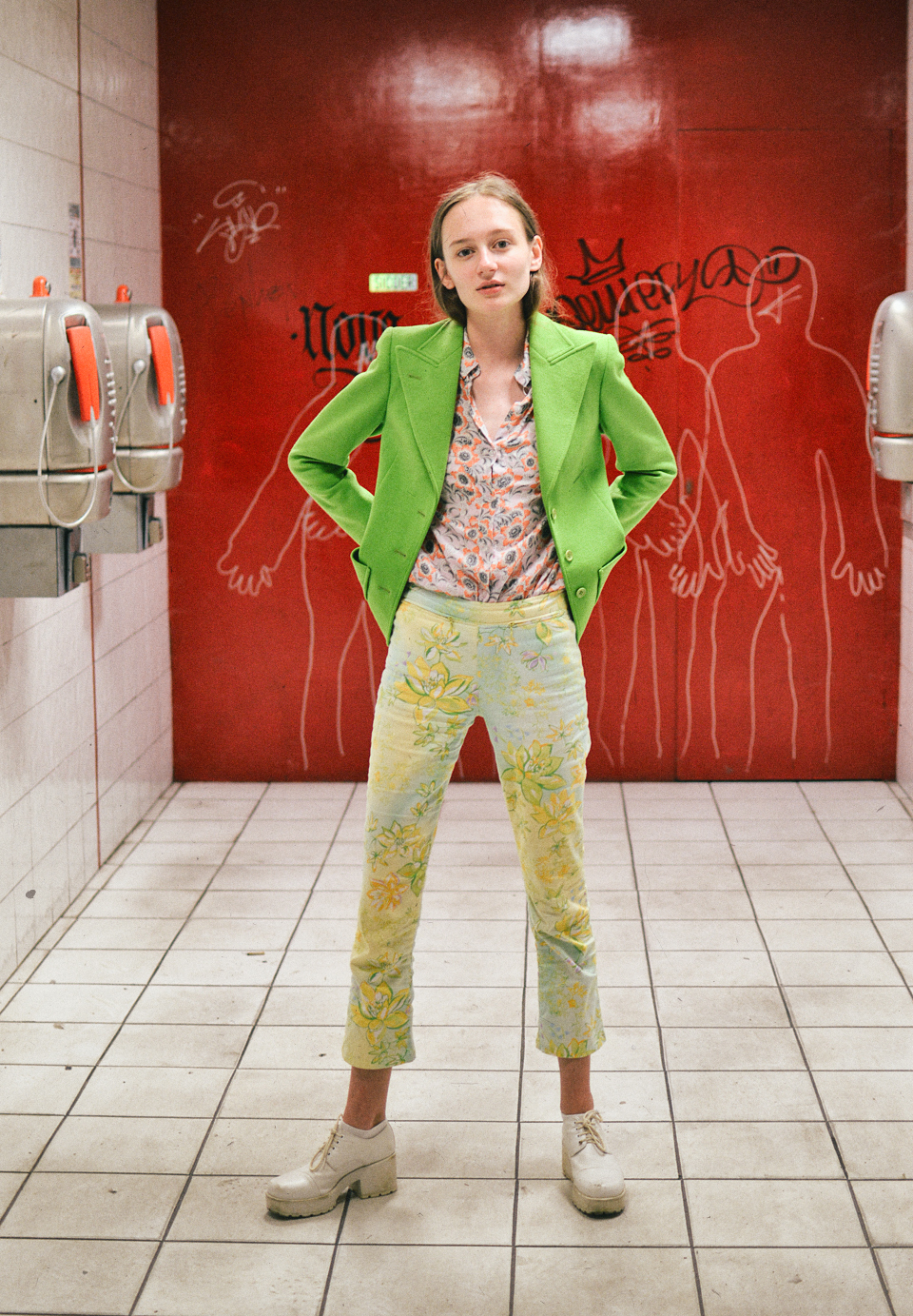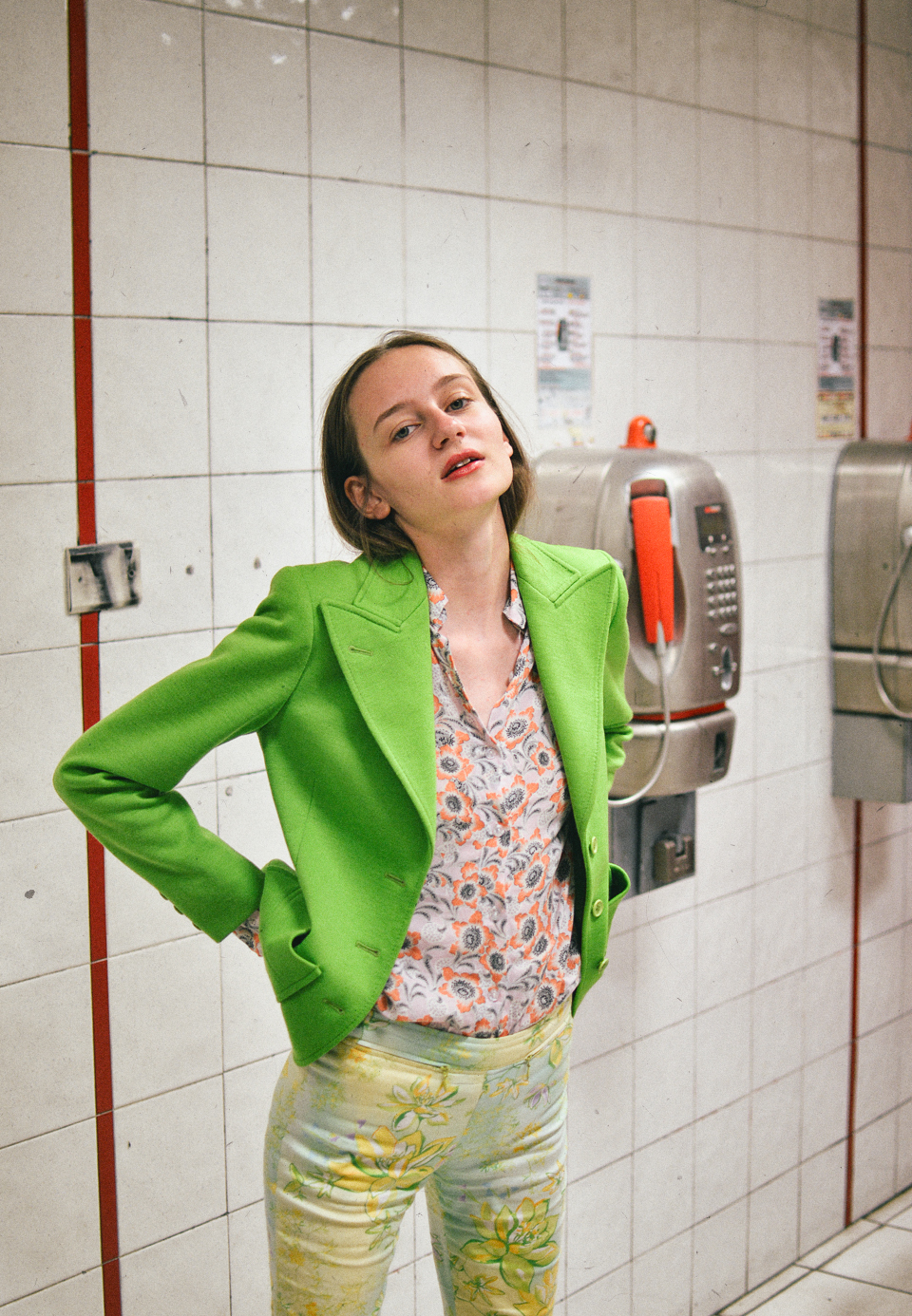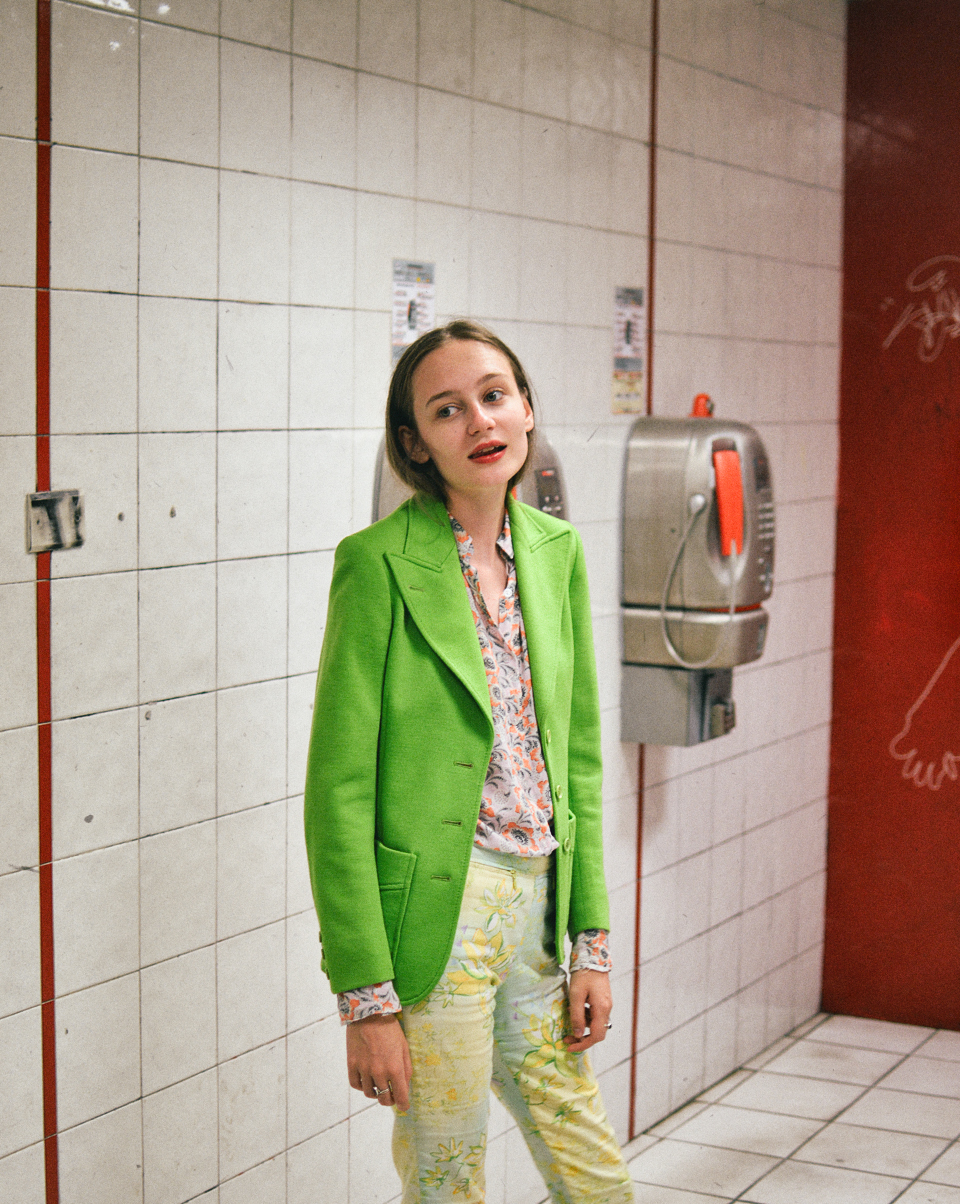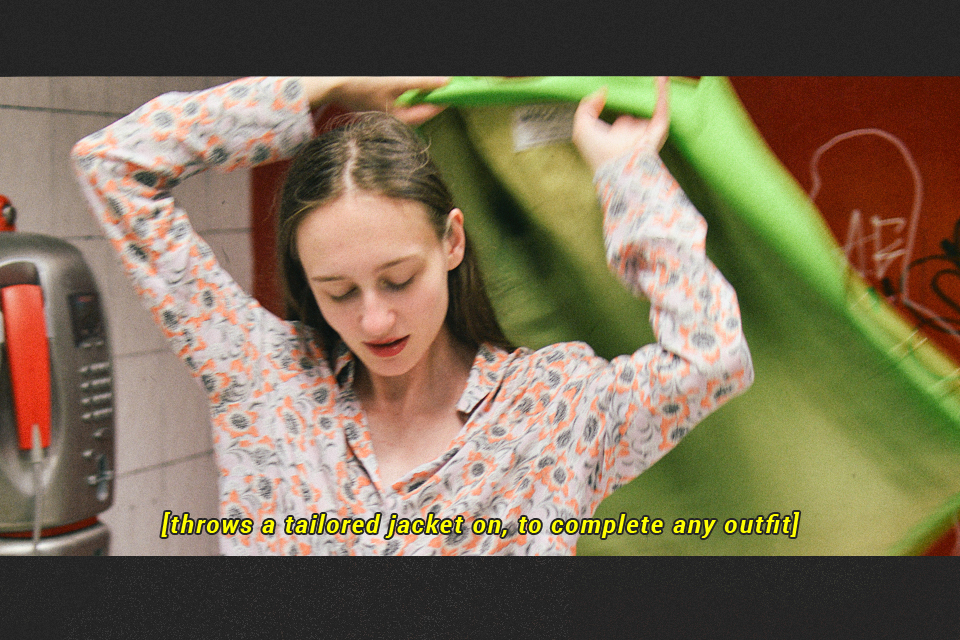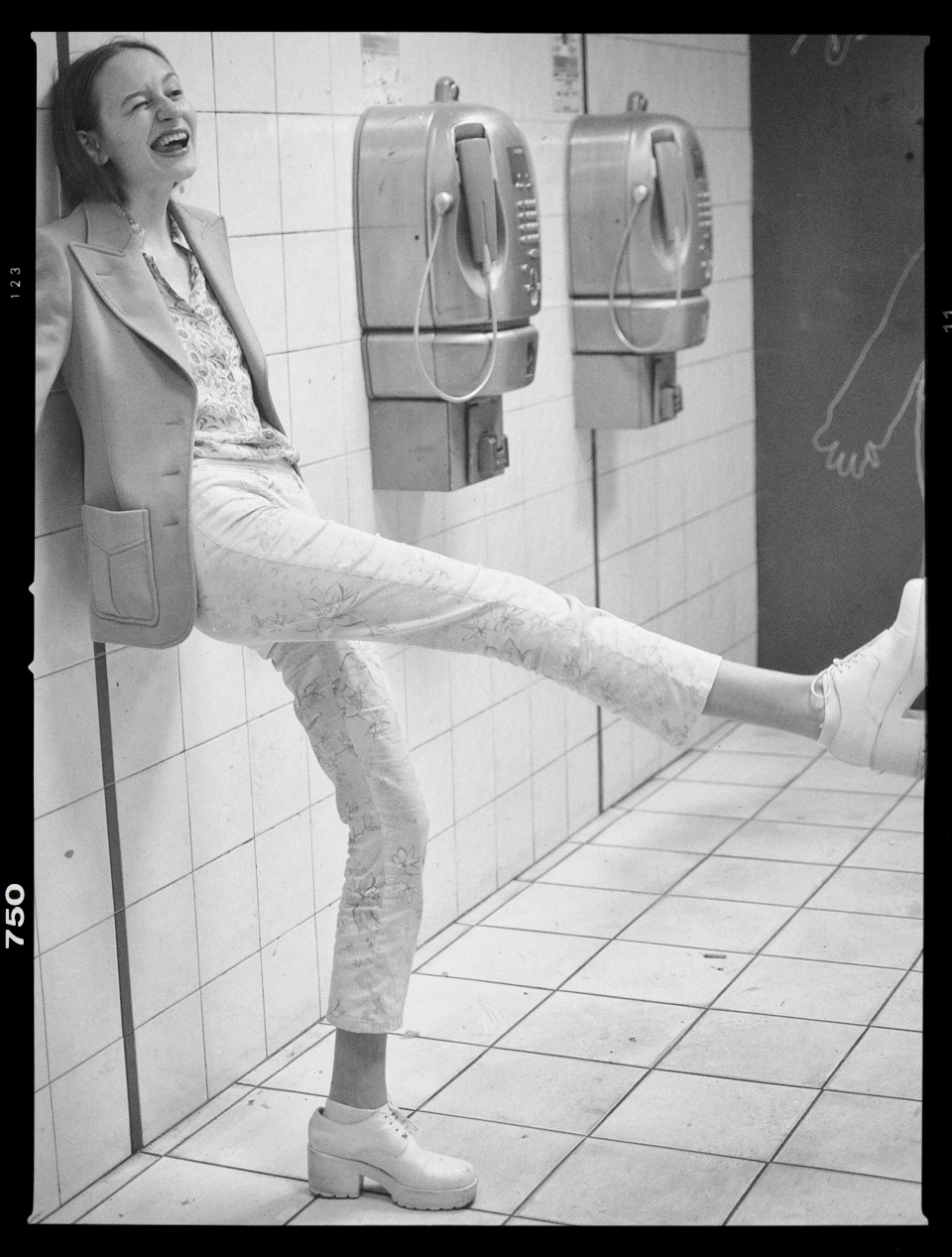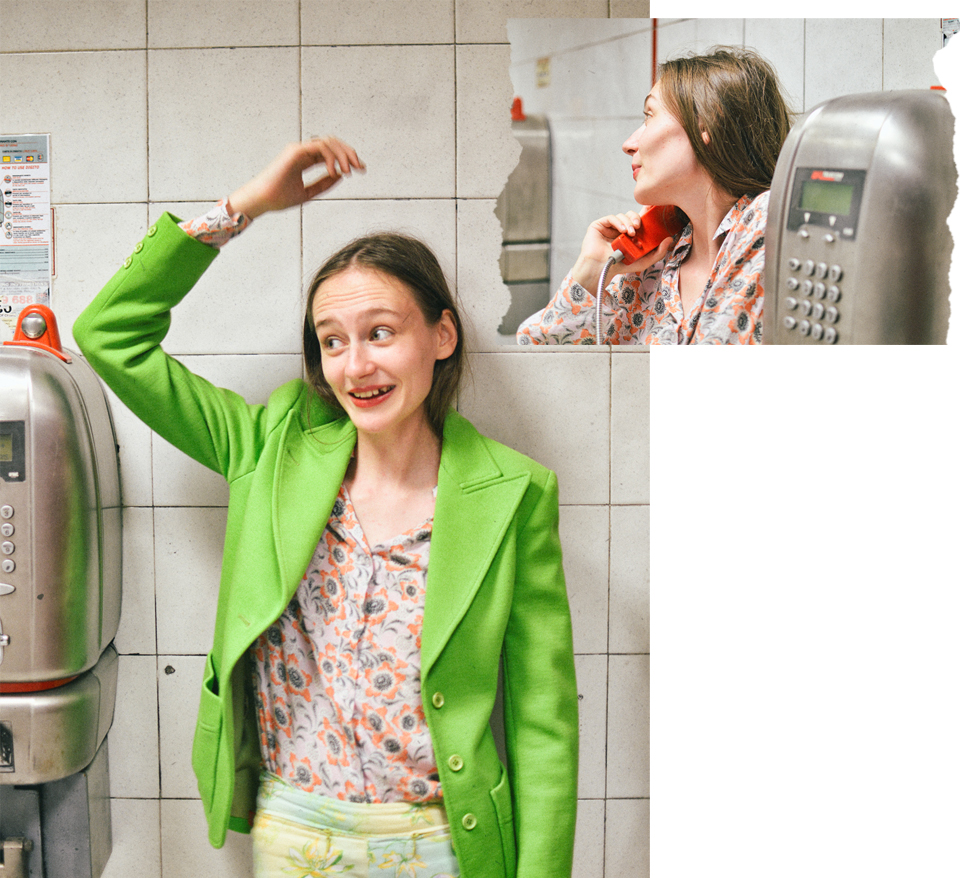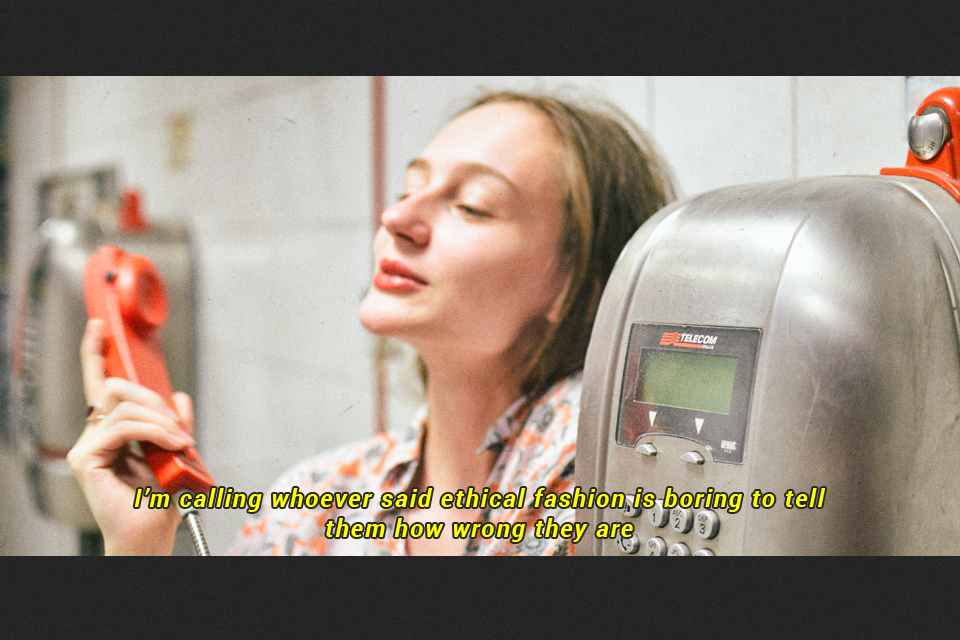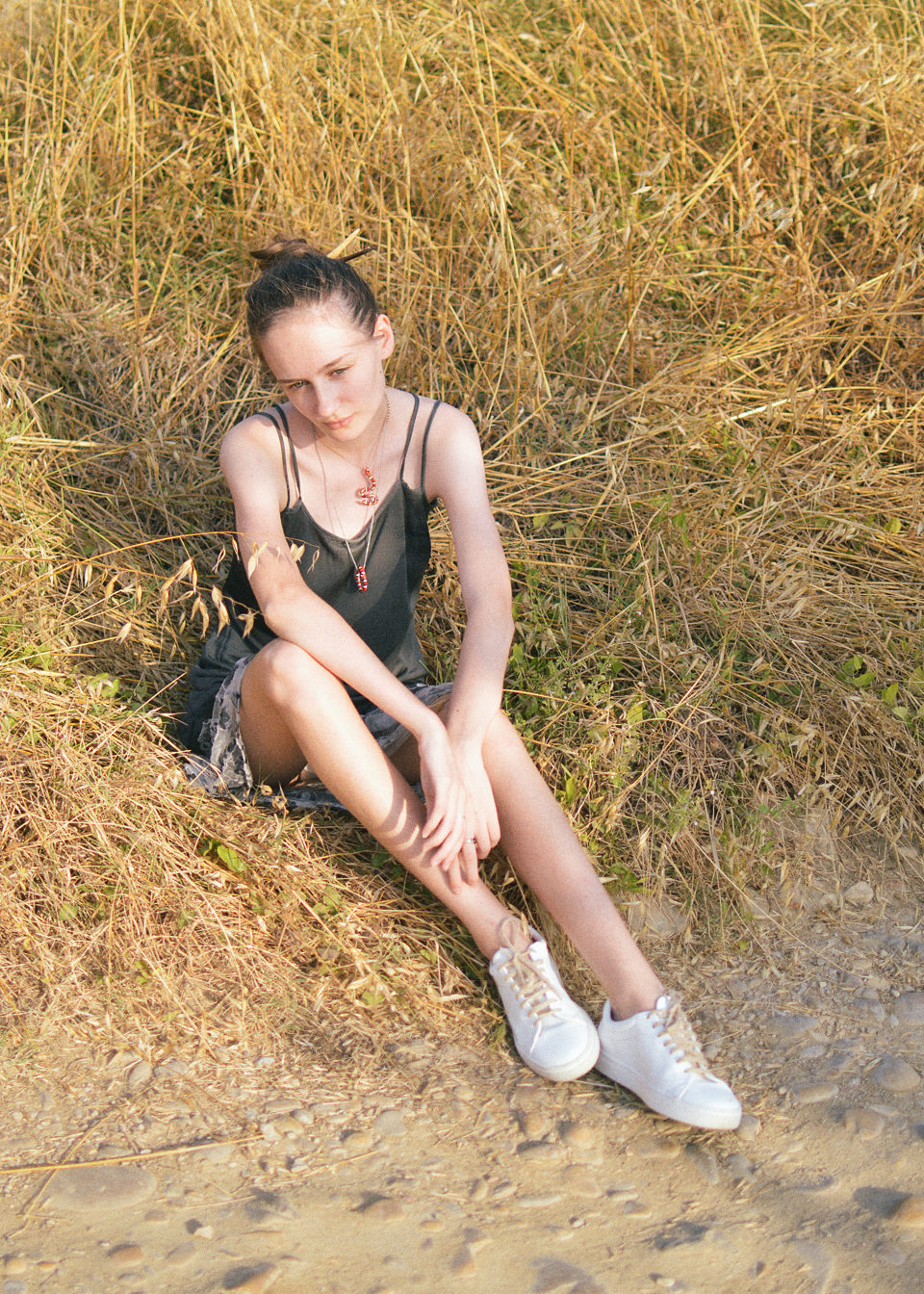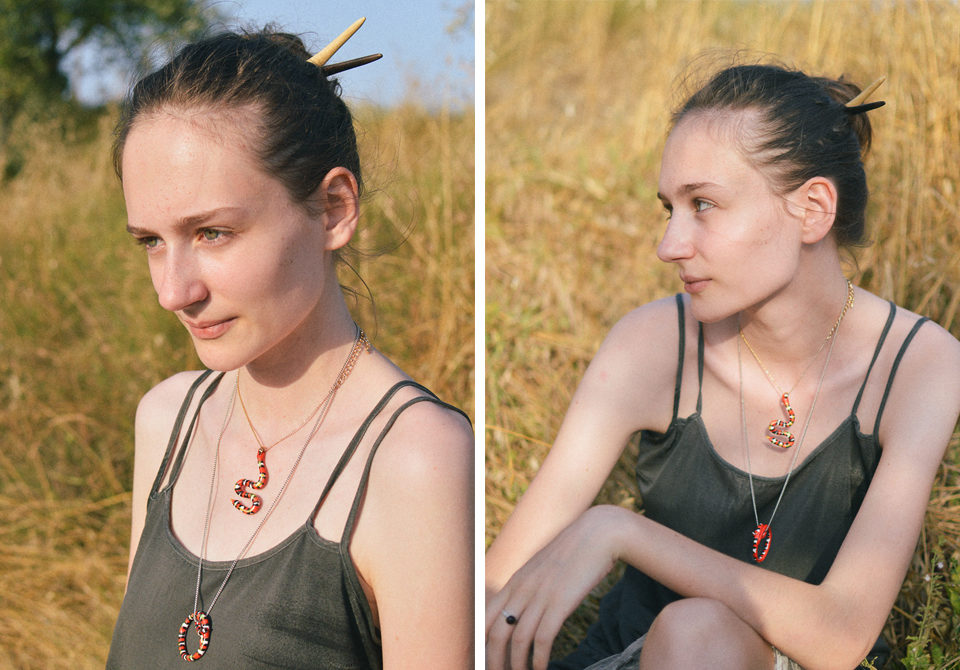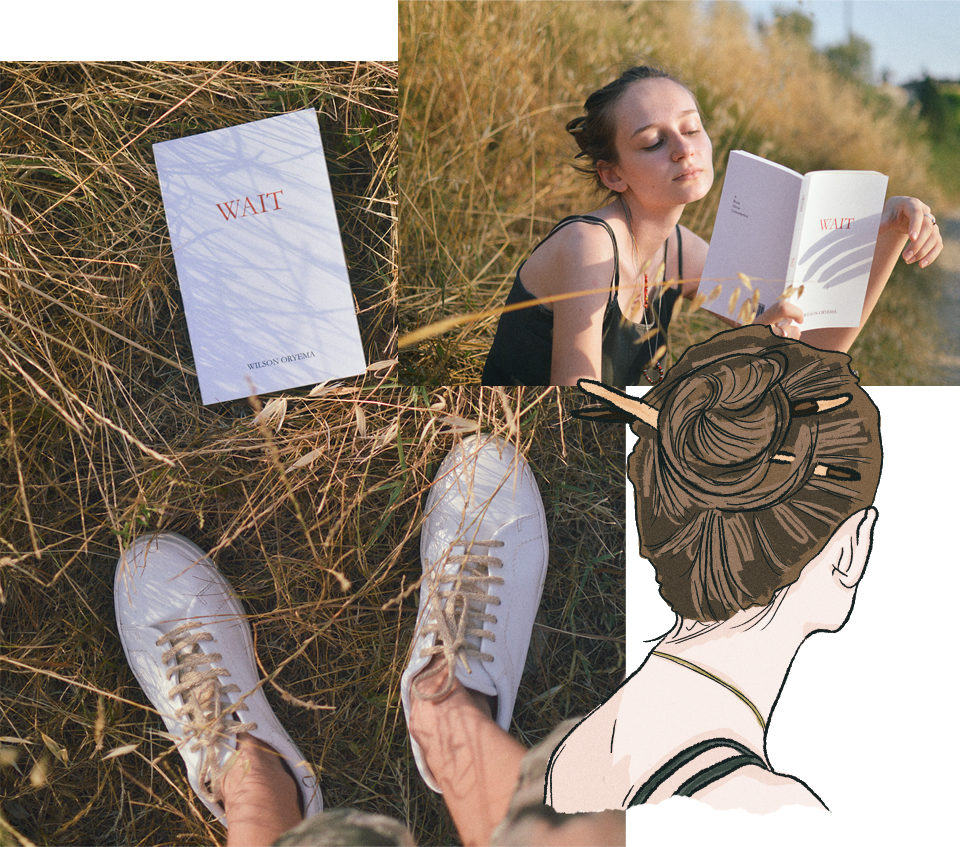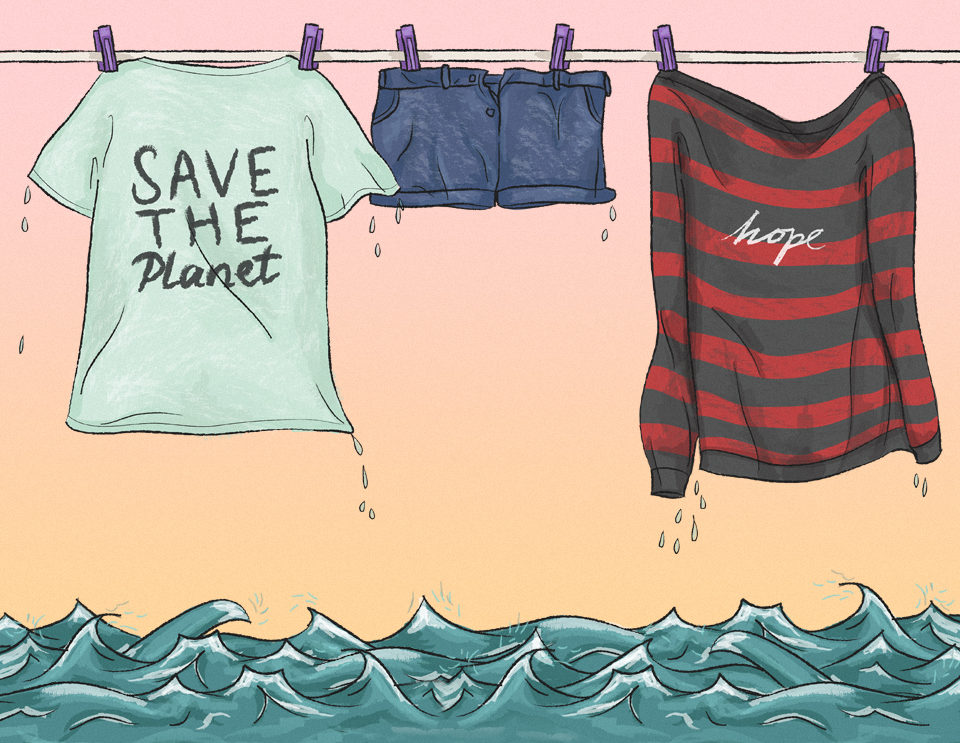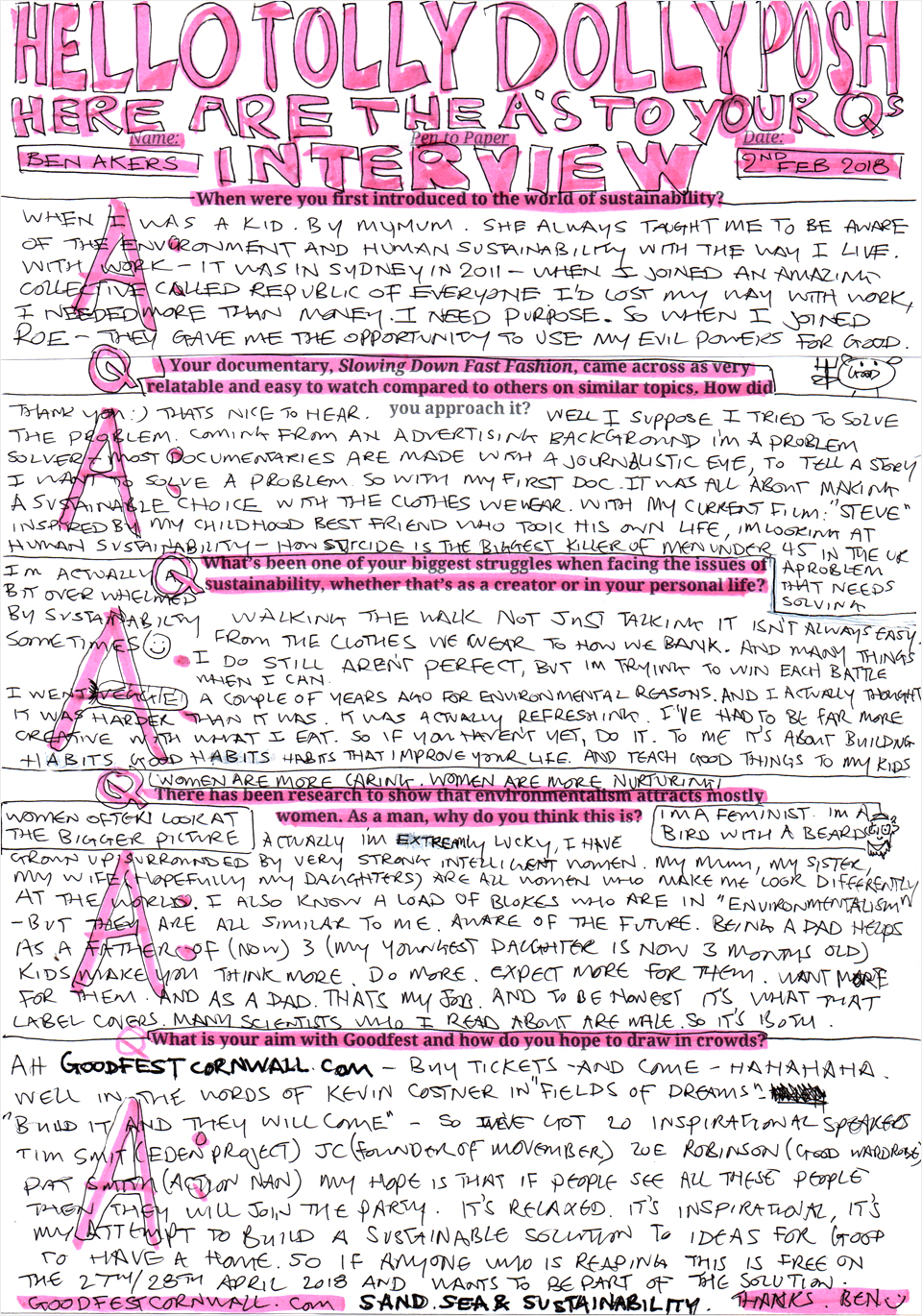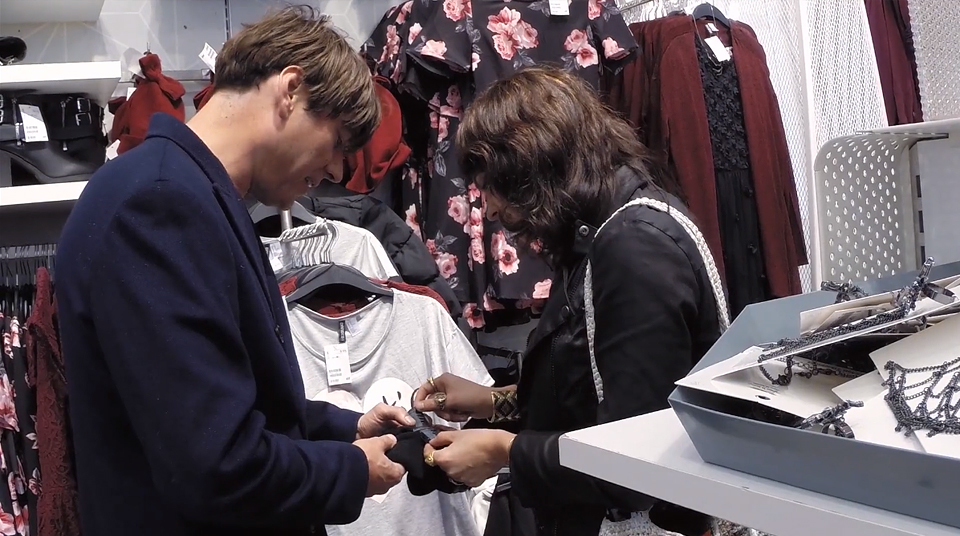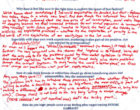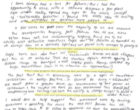I’ve said this numerous times over the past couple of years but it really is necessary to return to my roots of blogging sometimes and truly appreciate the parts of it that I’ve always enjoyed (like editorial shoots and focusing on second-hand style). With the climate crisis heavy on most of our minds, taking a breather from talking about it directly is a form of mindful self-care…
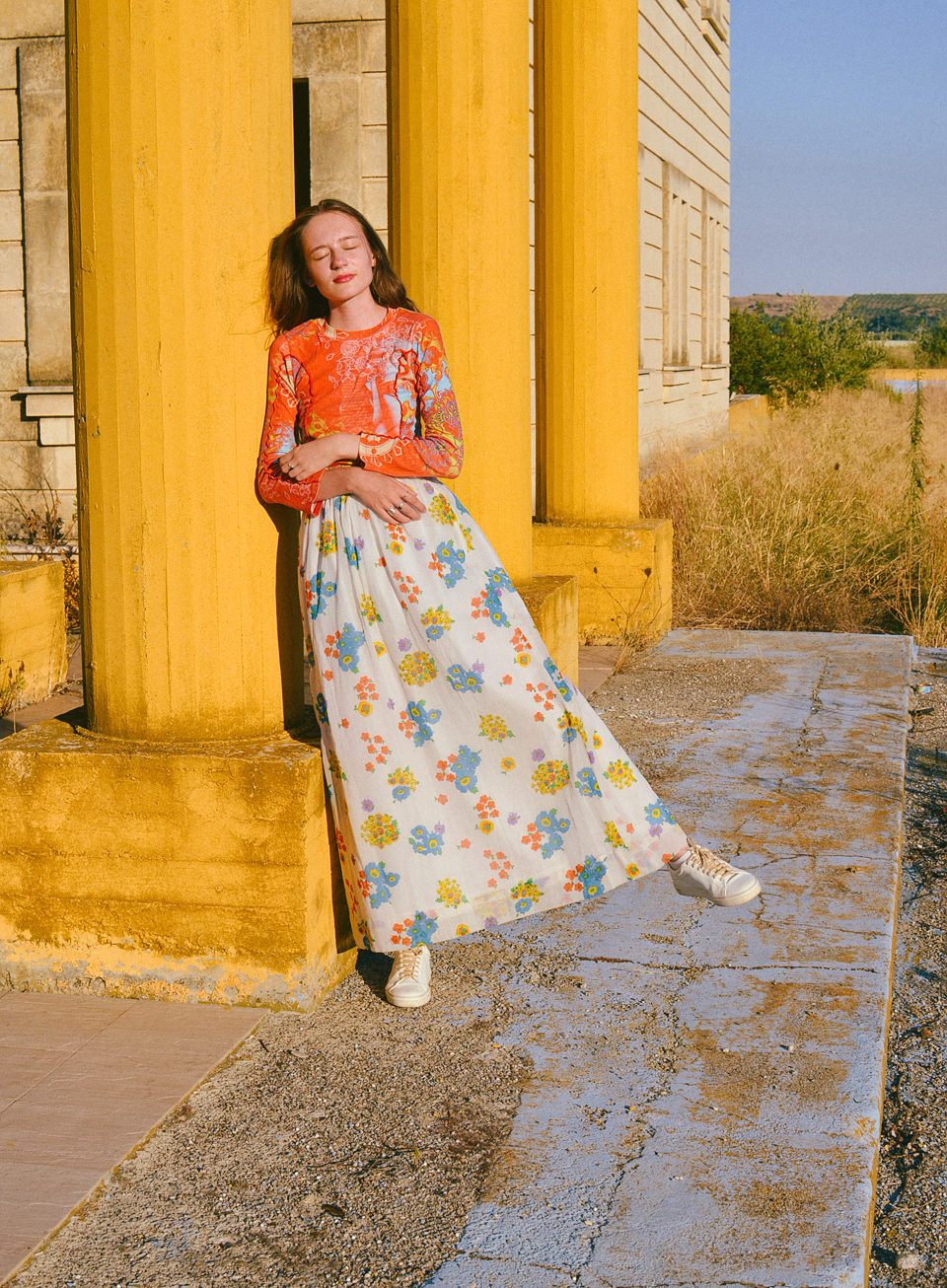
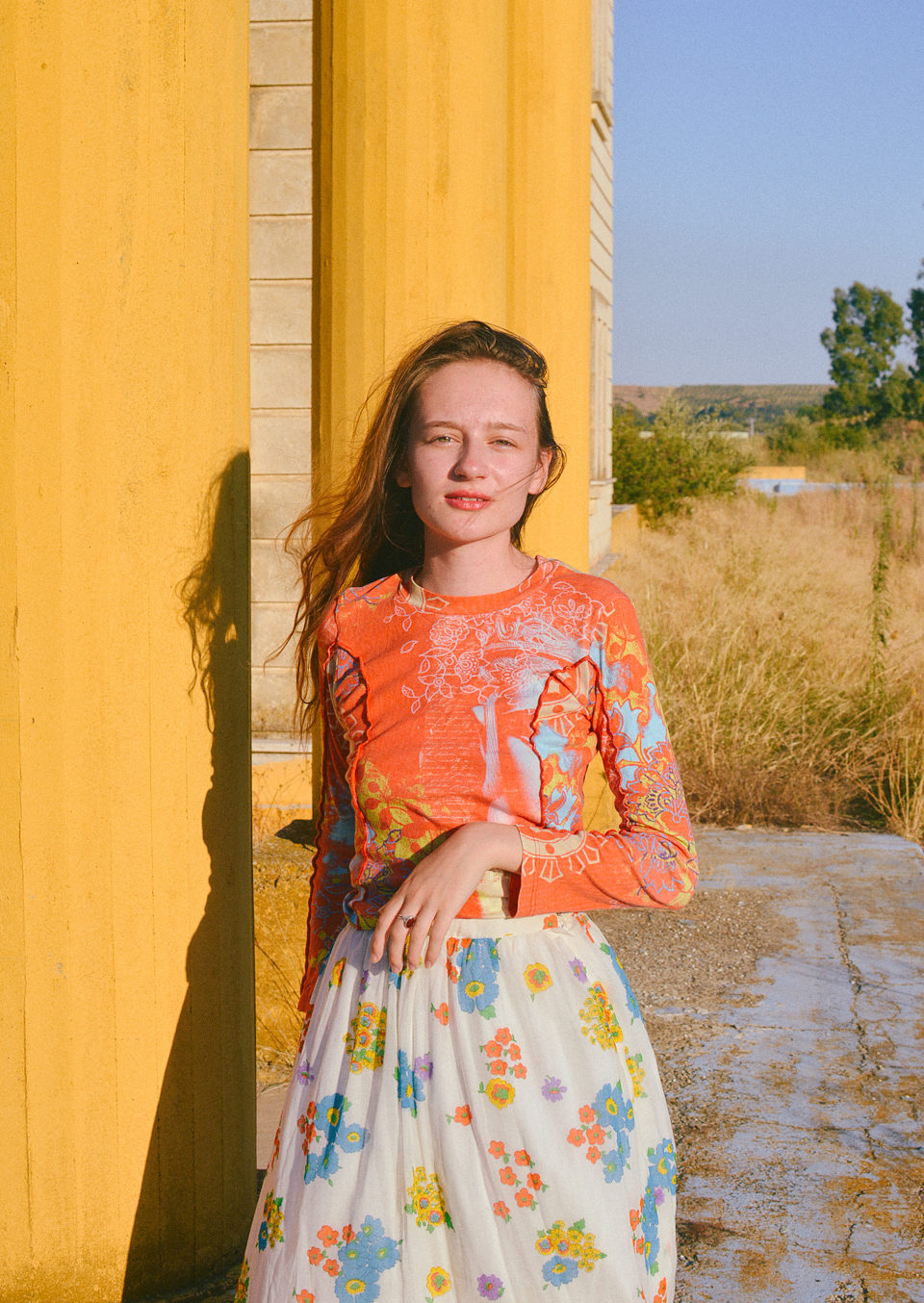
WHAT I WORE: Orange top (Jumble Sale) // Vintage Skirt (Charity Shop & DIY) // Sneakers (YATAY)*
Notably, this outfit isn’t an everyday look but when I come across the perfect shooting location, I tend to lean towards more creative and bold choices to match, even though this is technically just a three-piece look which takes little to no effort to put together. Of course, it’s all sustainable with the top and skirt both being second-hand.
I found this skirt in a charity shop last year. It was originally a very sheer and frail vintage piece which was much too large on me but the print wouldn’t leave my mind, so, it ended up being one of those “I’ve got to go back and get it!” purchases.
In the end, I sewed together an elasticated underskirt in some white cotton that my mum had lying about. The fact that I didn’t attach it to the floral skirt itself means I can always reuse it for another skirt if it were ever needed. It’s the closest thing to a princess dress you’ll find in my wardrobe and it was quite literally made for me (by me!).
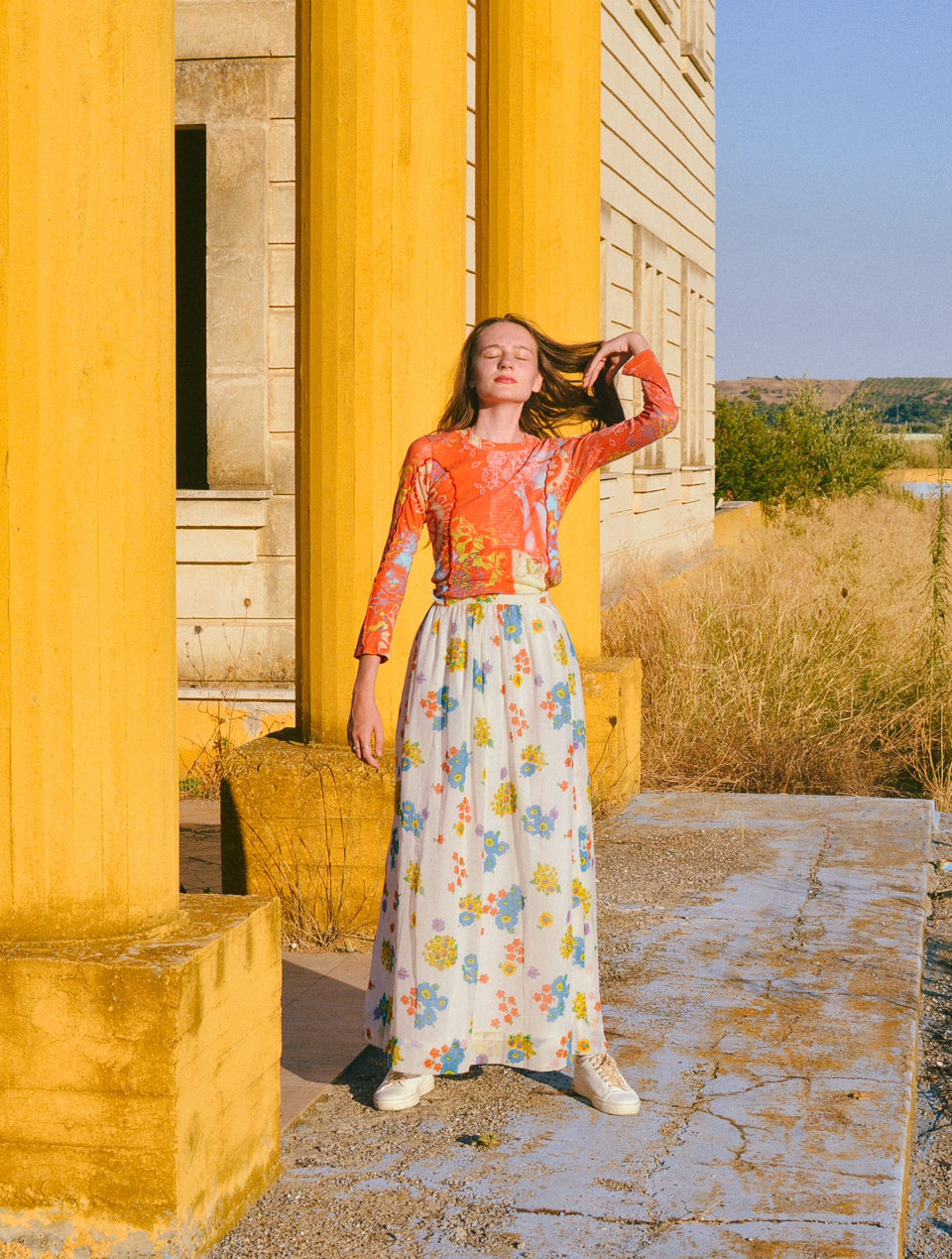
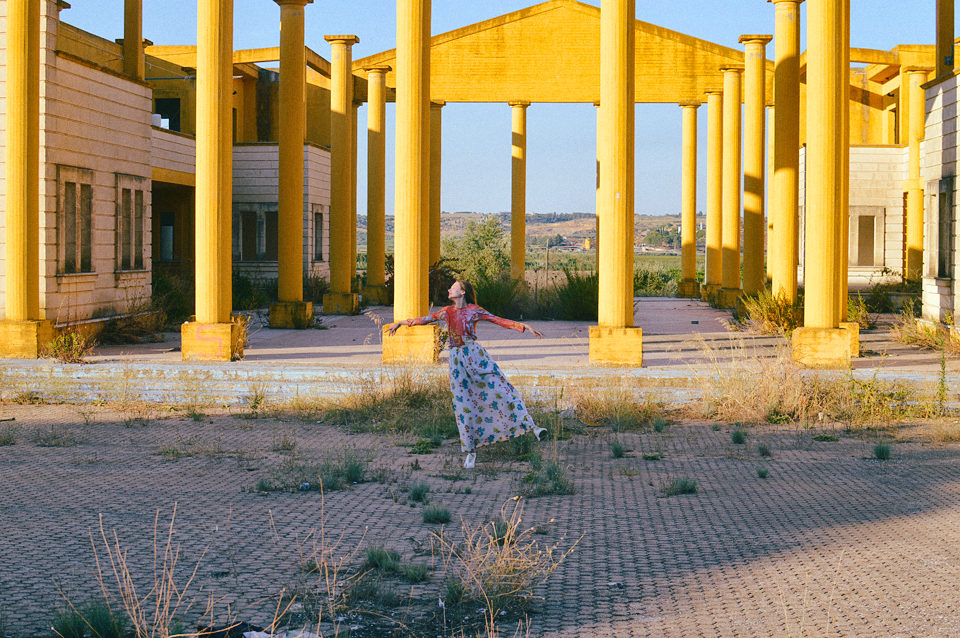
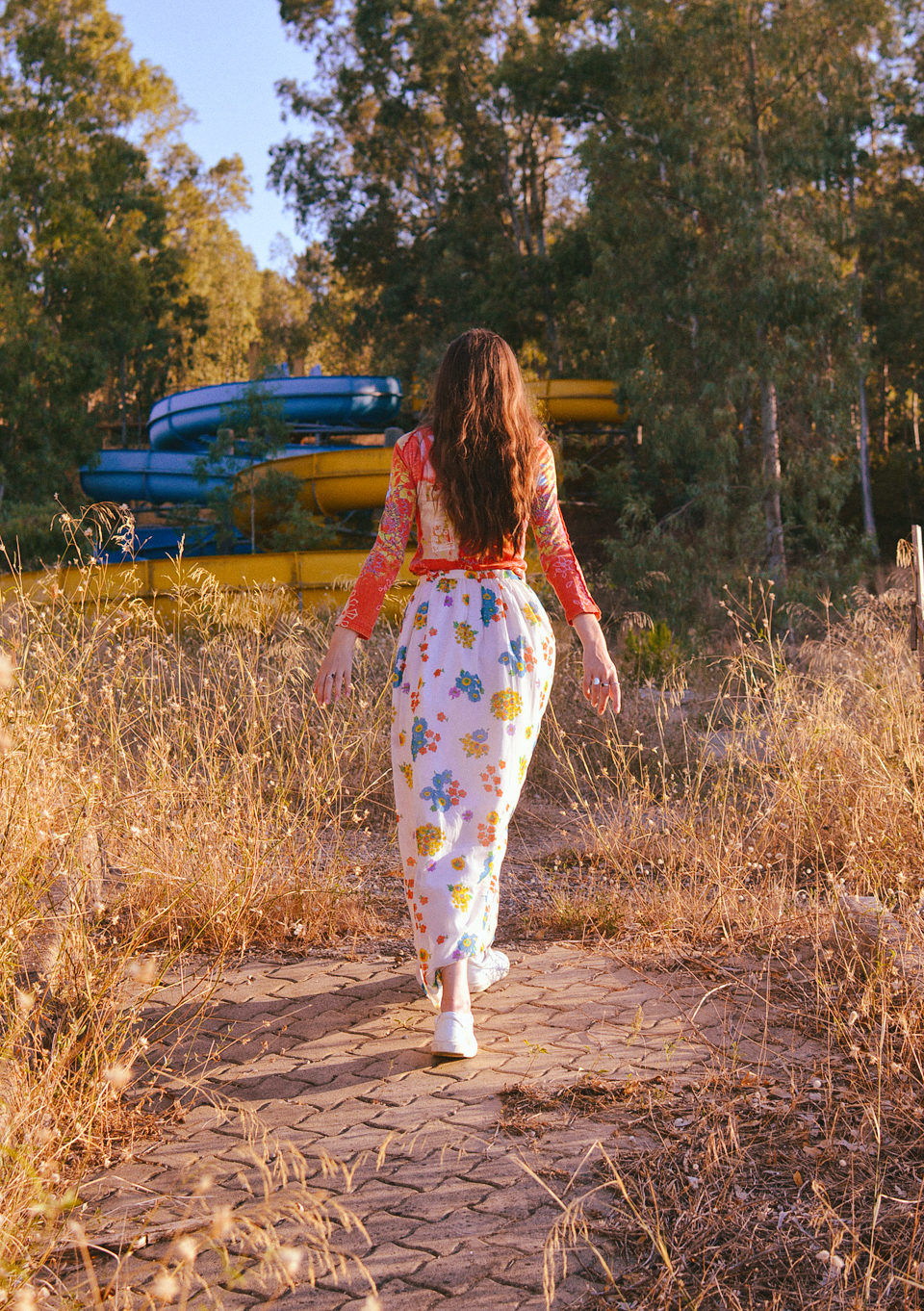
Not only is shopping second-hand far more environmentally friendly but it also brings with it sentimentality and the memories behind each purchase. If we want to love our clothes for longer, we need to connect with them emotionally and I think that’s a little harder to do when browsing through shops which are filled with almost identical pieces, rail after rail.
Having said that, I don’t have much recollection of where this orange top came from. I know it was from a second-hand sale but I can’t remember from where or from what country. It’s one of those tops that I don’t reach for constantly but whenever I wear it, I appreciate its purpose (and its almost perfect colour match to my skirt).
In terms of the shoes, they’re pretty self-explanatory. They’re the sort of shoes that I never would have seen myself wearing a few years ago until I started to realise the only truly versatile pair I owned were a pair of white platform heels. So, in came these to my feet’s rescue and now they’re my go-to summer footwear choice. You can read more about what makes them sustainable, here.
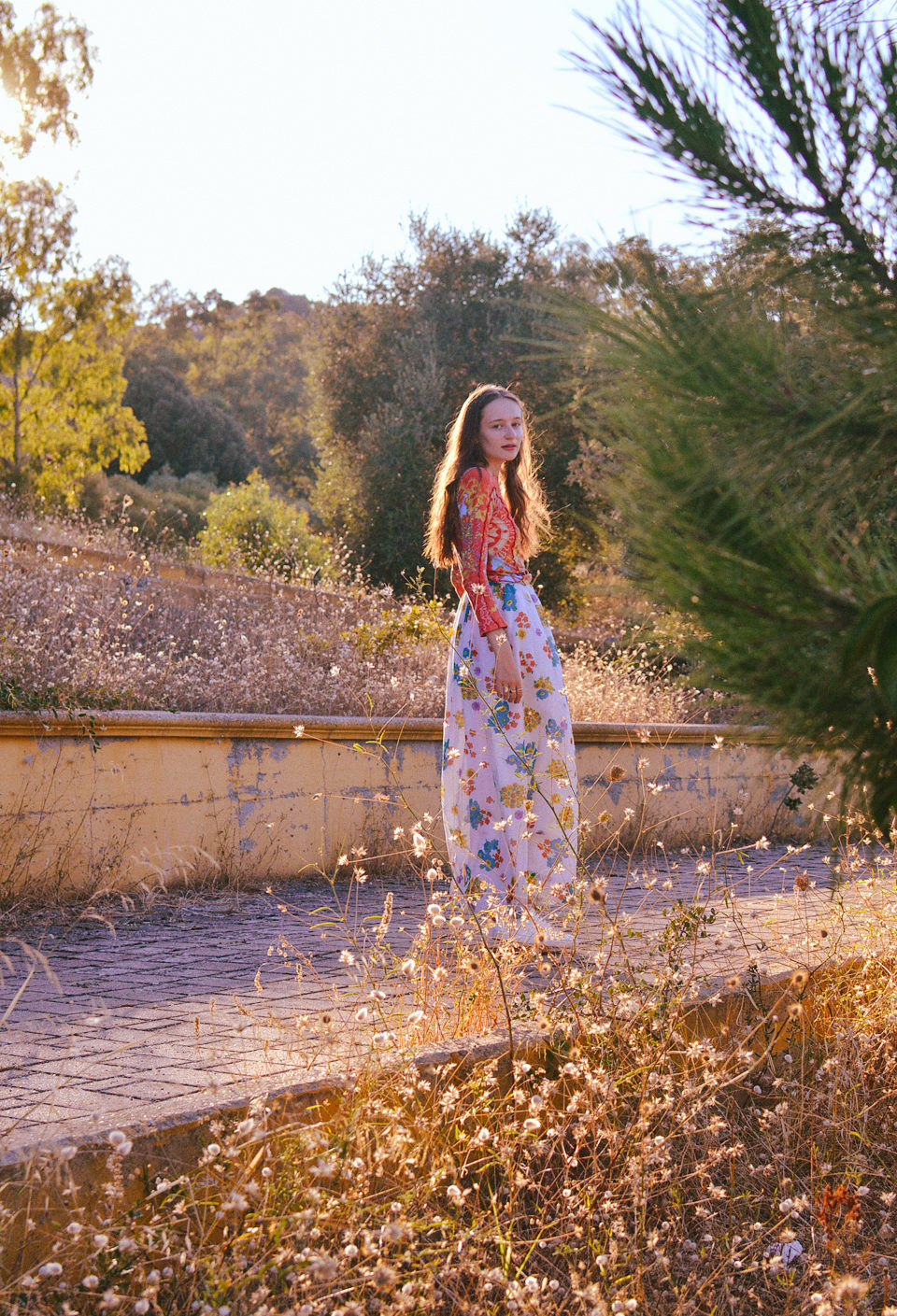

I will be honest though, it’s extremely hard for me to completely compartmentalise my eco-anxiety from what should seemingly be a straight-forward fashion piece, especially when the location I was shooting at seemed like a glimpse into our future. A deserted waterpark or a planet left with what used to be?
I’ve had quite a few of these thoughts lately, especially in my local area where the green spaces and parks are surrounded by houses and roads. If we’re not going to be here, what are we going to be leaving behind? What have we done to what used to be natural and wild?
If I’m to attempt to apply these musings to my clothes, I suppose it circles back to sentimentality, again. I’ve written about this before and I’ve contemplated what items in my wardrobe I would like to pass down to my children (if I have them this is – that’s a whole other conversation to touch on at some point; the fear of bringing a new generation into a world that is going to suffer).
My collection of Dr Martens (which are both second-hand and years old) are going to be passed down no matter what, considering how long-lasting they are. I might cling onto my calf-high pair though, seeing as they’re becoming a piece of history as my ‘protest boots‘.



Speaking of which, like many movements which came before the likes of Extinction Rebellion and Fridays for Future, we’re leaving behind a mark in more than a directly change-making way. We’re leaving behind an identity and memorabilia which we will hopefully look back on as a positive mark of our existence.
I actually recently touched on this subject for AJ+ (part of Aljazeera News), as they interviewed me about fashion and activism and how I use what I wear and create to play a part in demanding climate justice. I used to feel alone in this but there’s such a sense of inclusion when there are ways of indicating your belief in something. Extinction Rebellion flags are already displayed in the V&A in London, so, it’s hard to deny that we’re leaving a mark.
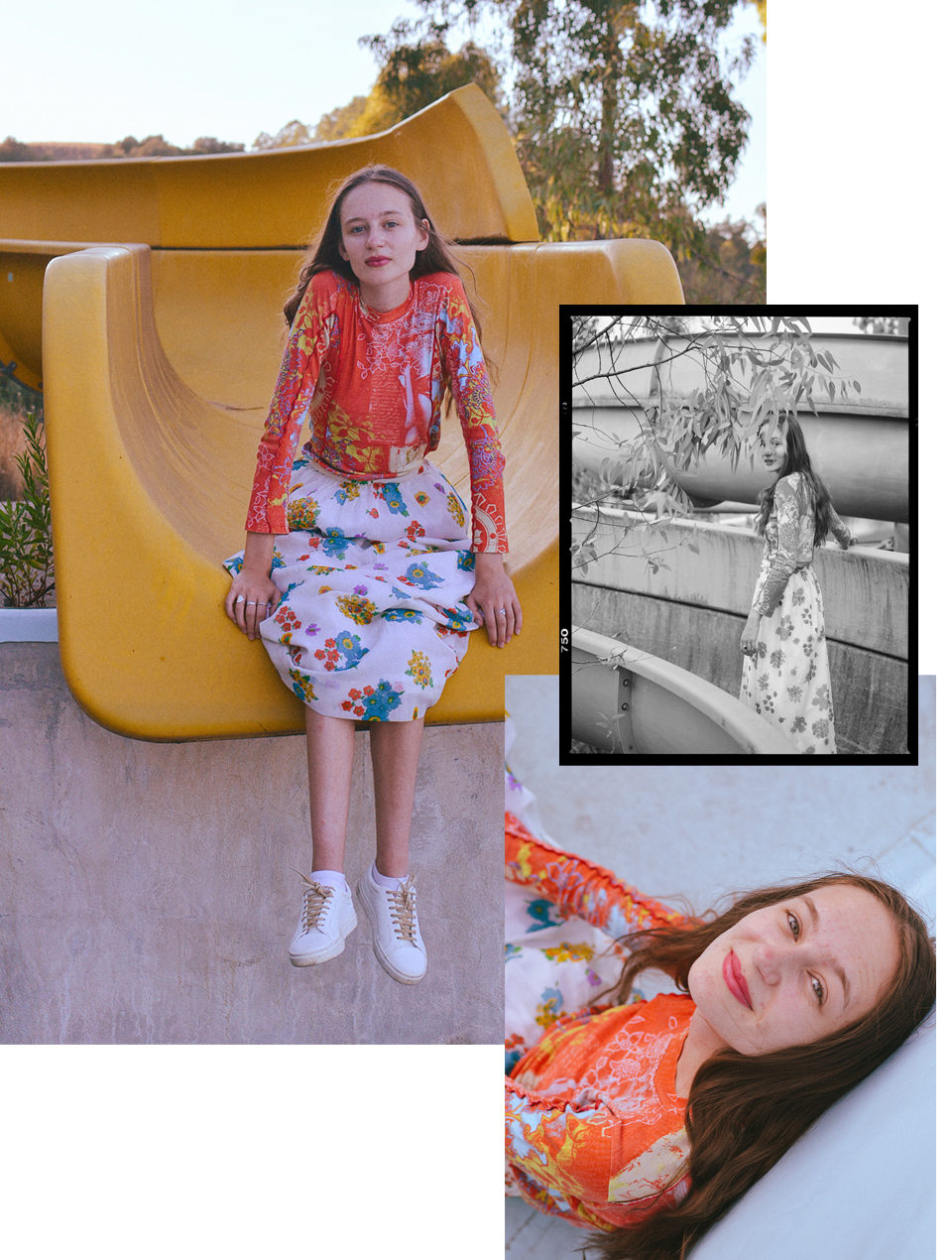

I hope that what we leave behind will be salvageable, whether it’s our clothes or whether it’s waterparks which are starting to overgrow and rewild themselves into something actually rather stunning. Let this be a reminder that what we use, what we own and what we dispose of will remain in some shape or form; that our clothes, much like our buildings, need to be passed down and appreciated rather than left in disarray.
There is so much beauty and life in what has already been used, so, as much as I may fear what the world will look like without me – us – here, you have to imagine everything with the sun setting behind it and be proud of all the things that we’re leaving in an attempt to avoid that ever happening.
So much for a light-hearted return to what should have just been a style post, eh?
How is your eco-anxiety showing up for you? Let me know in the comments…







